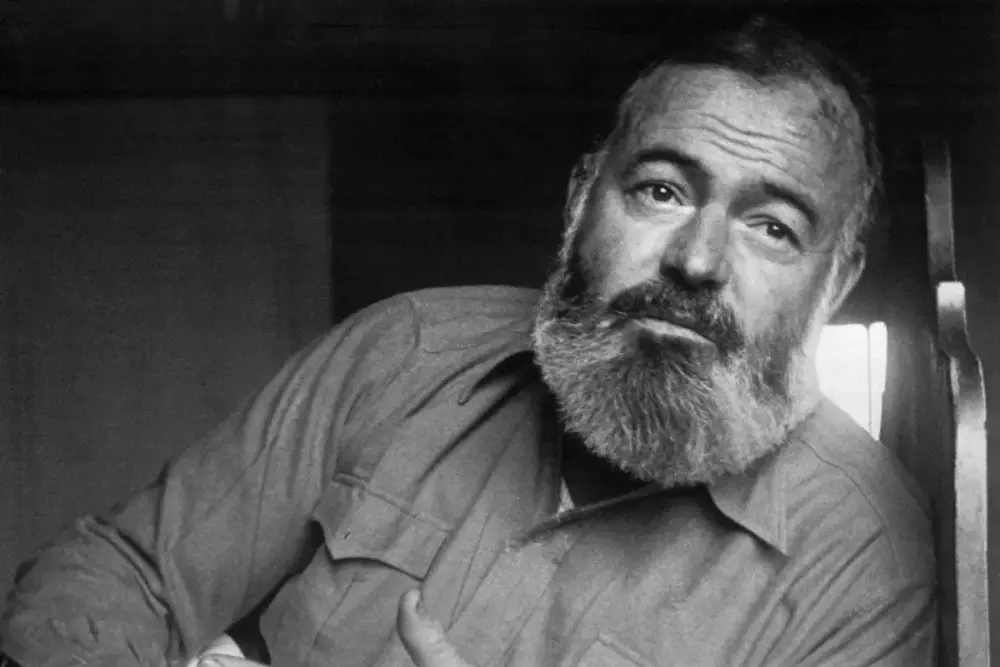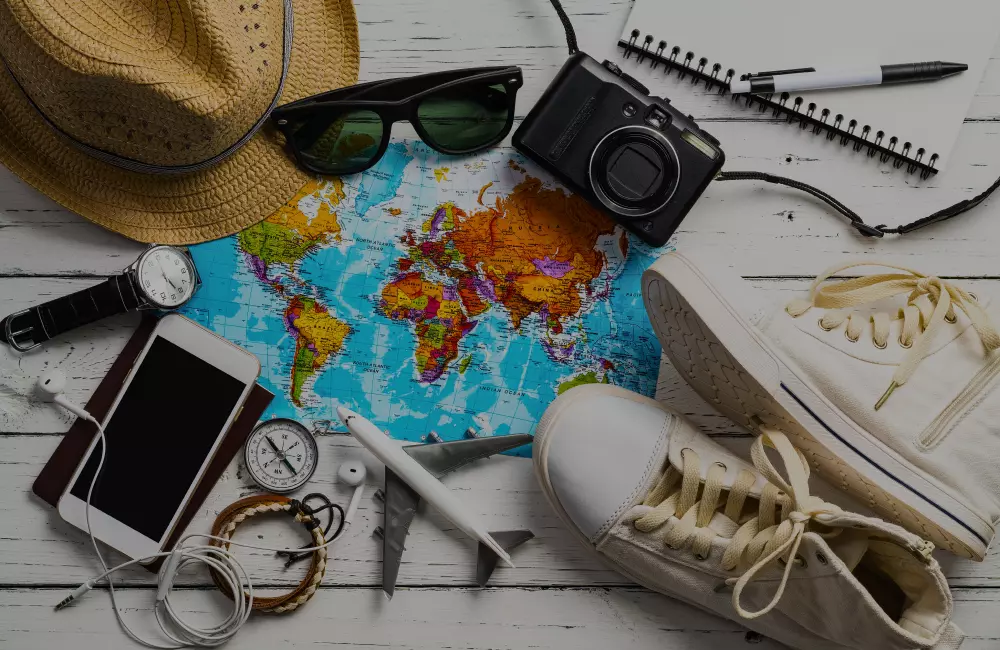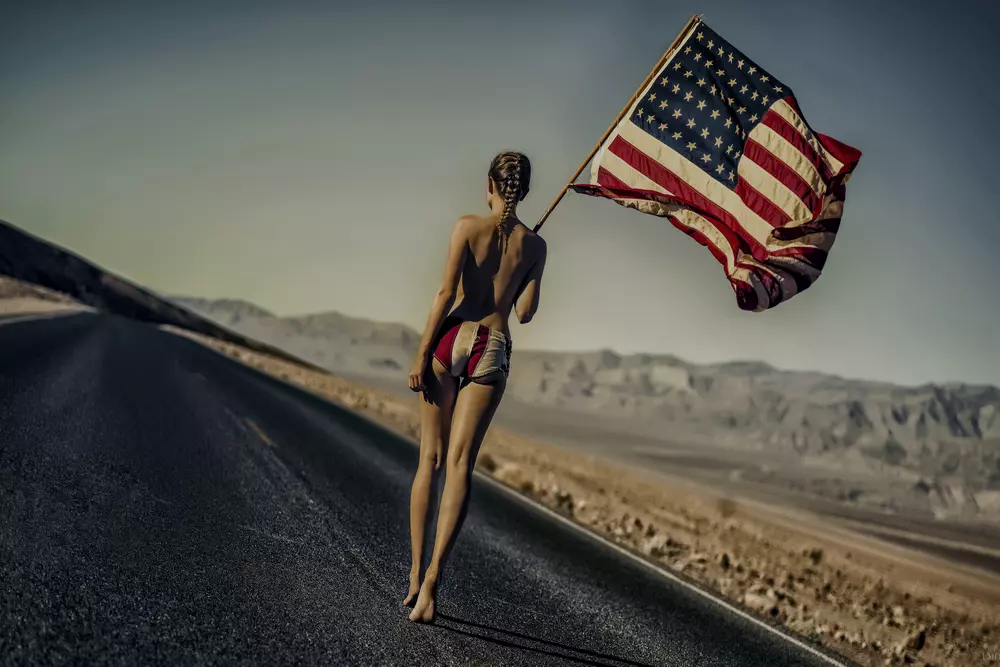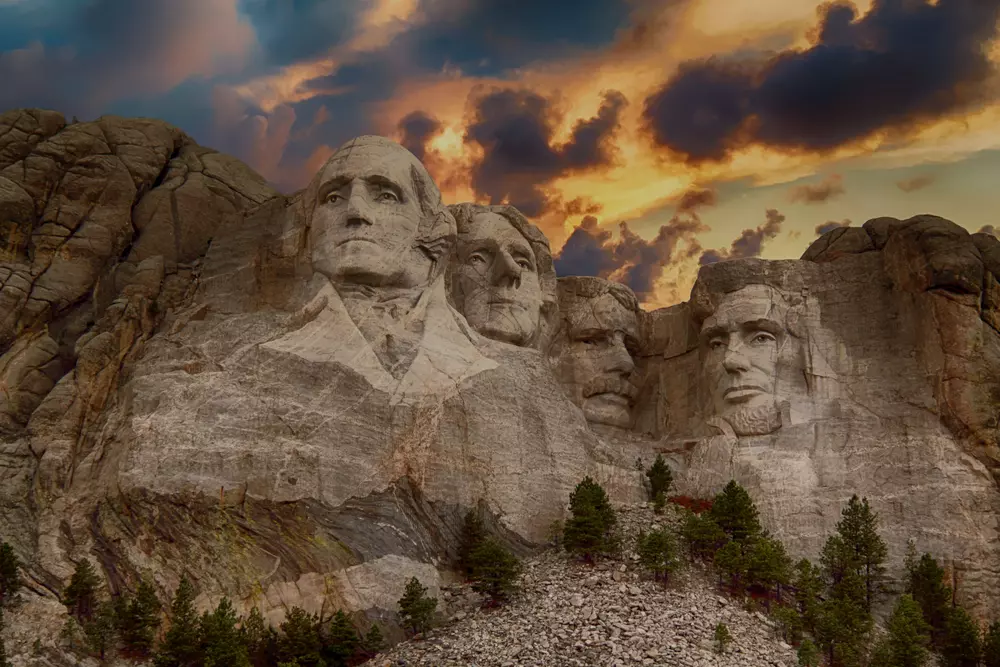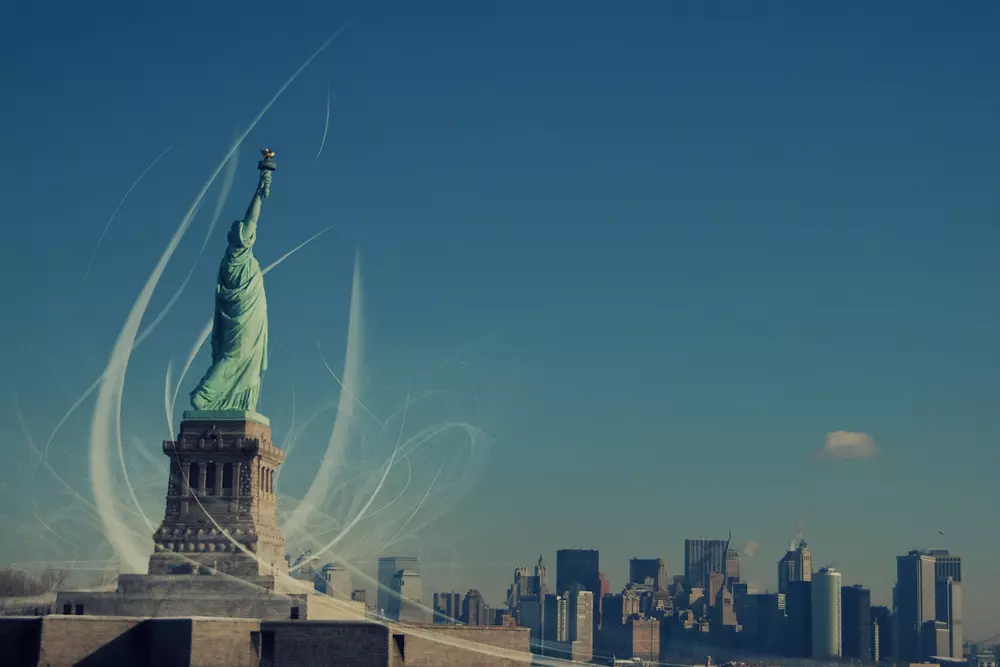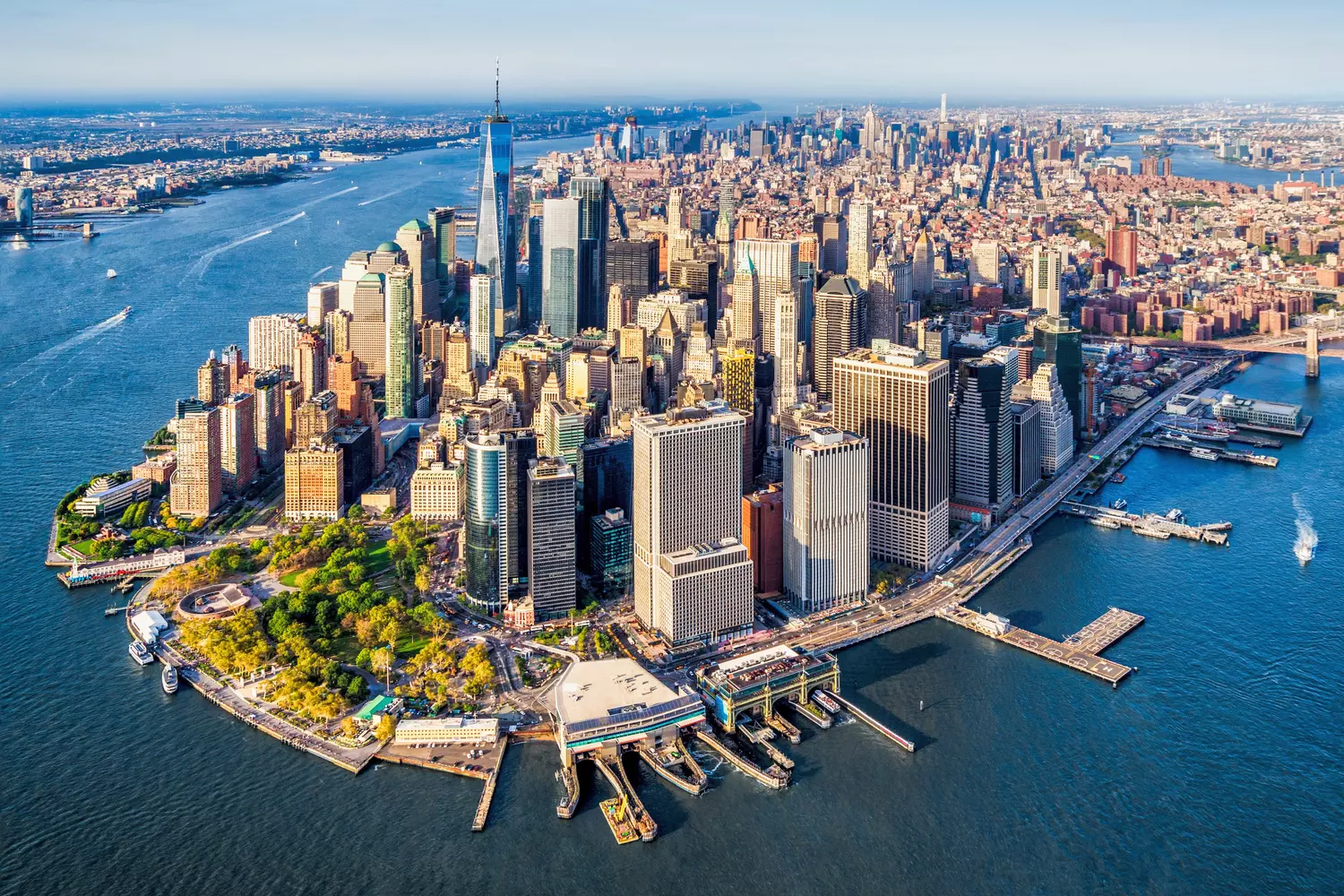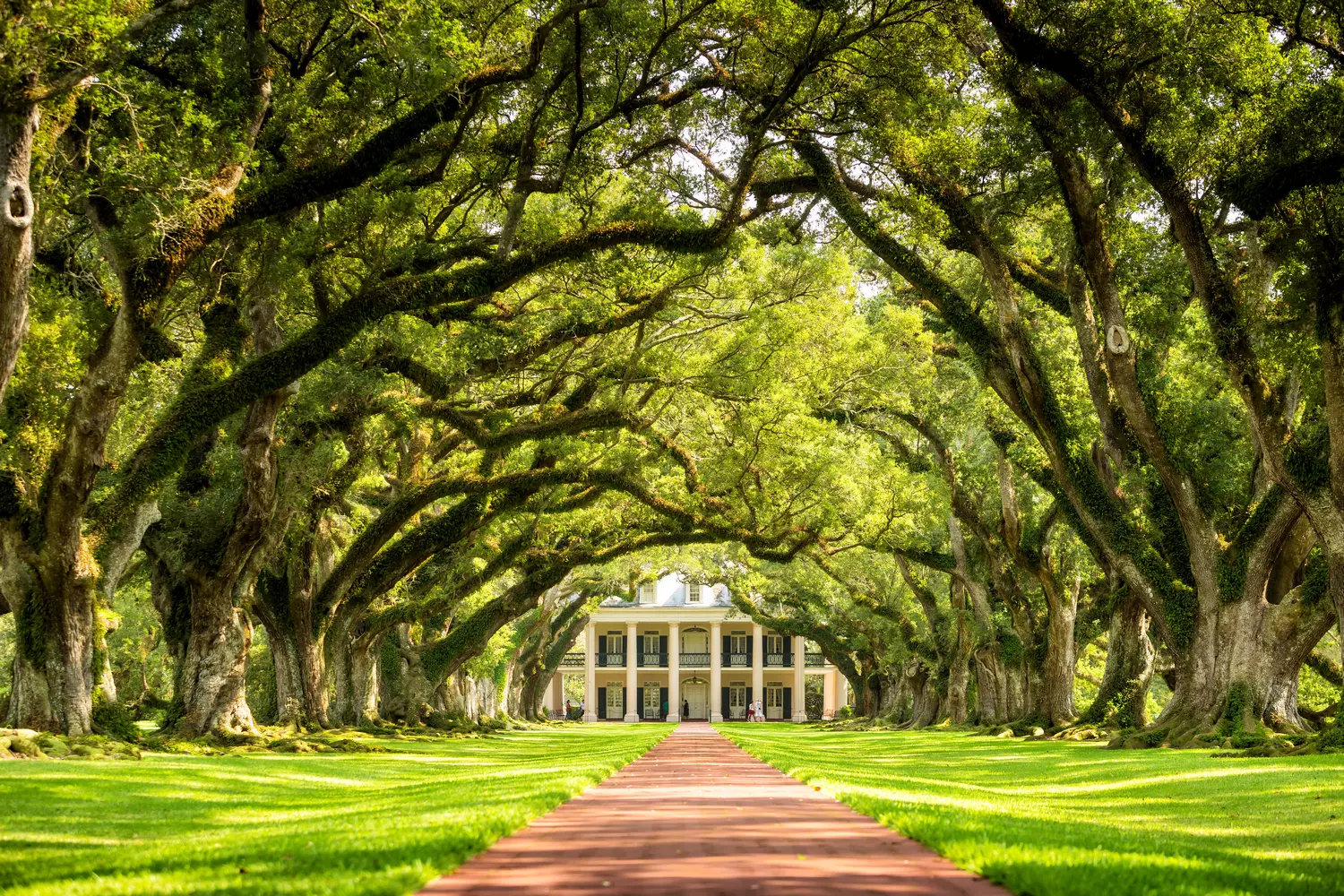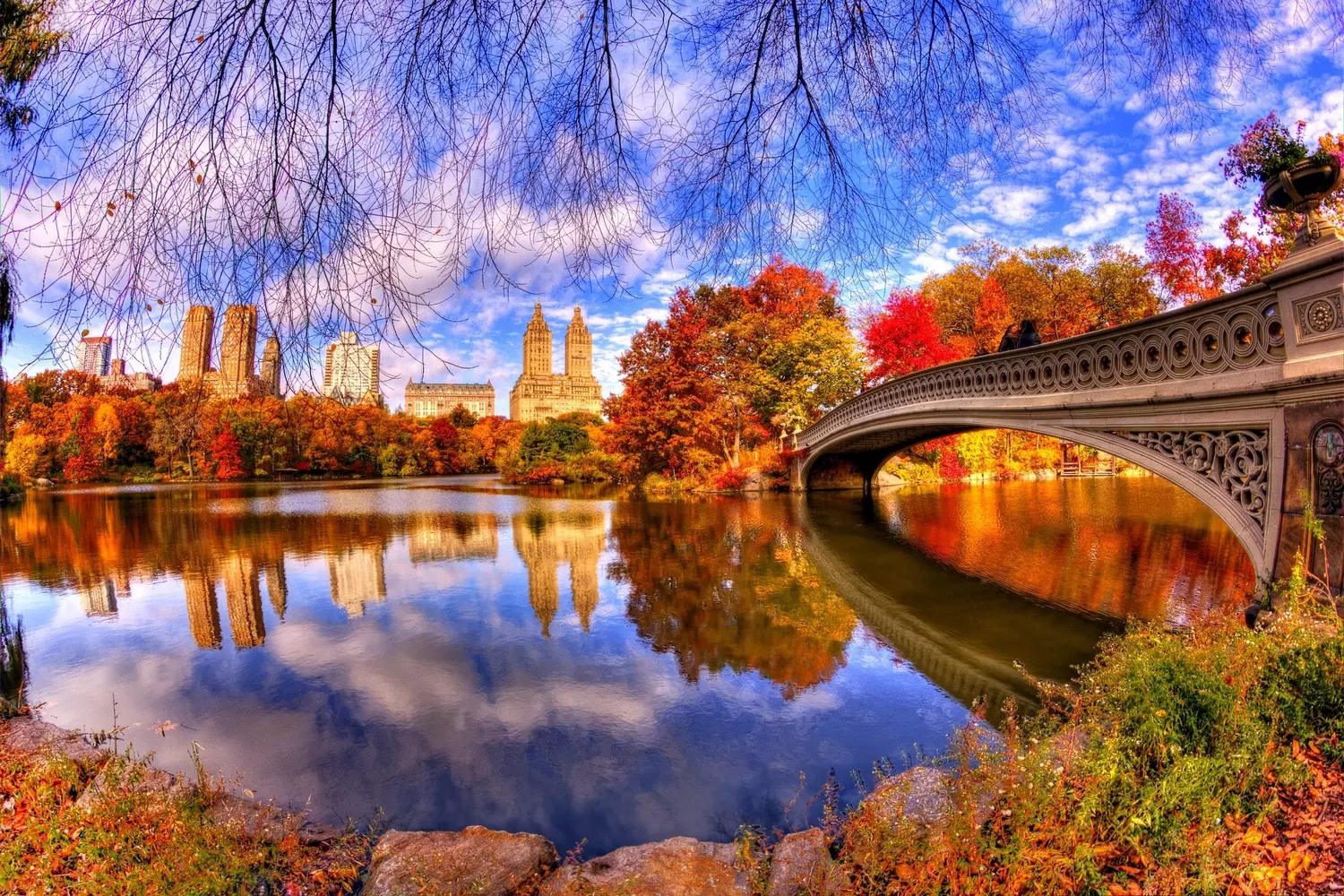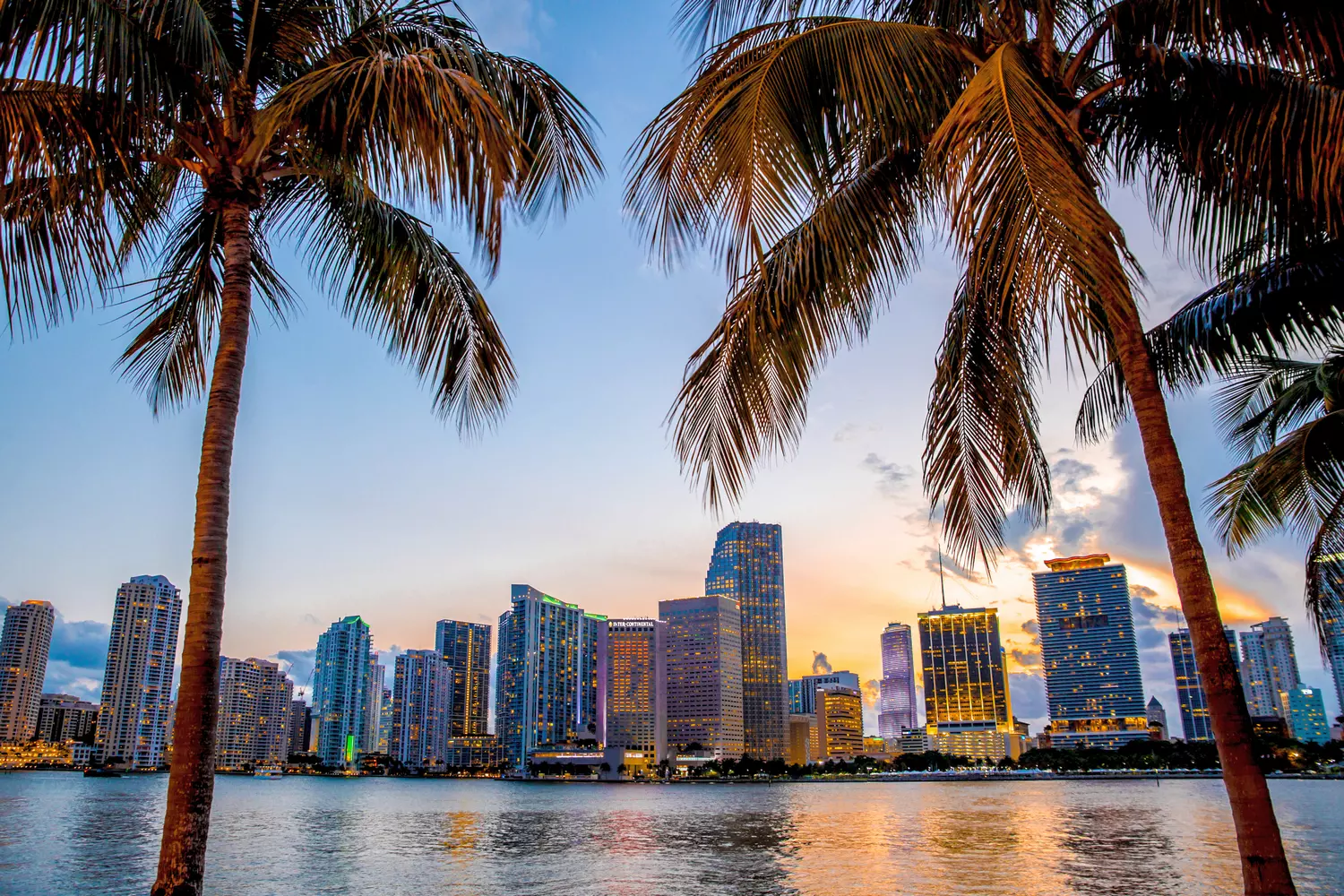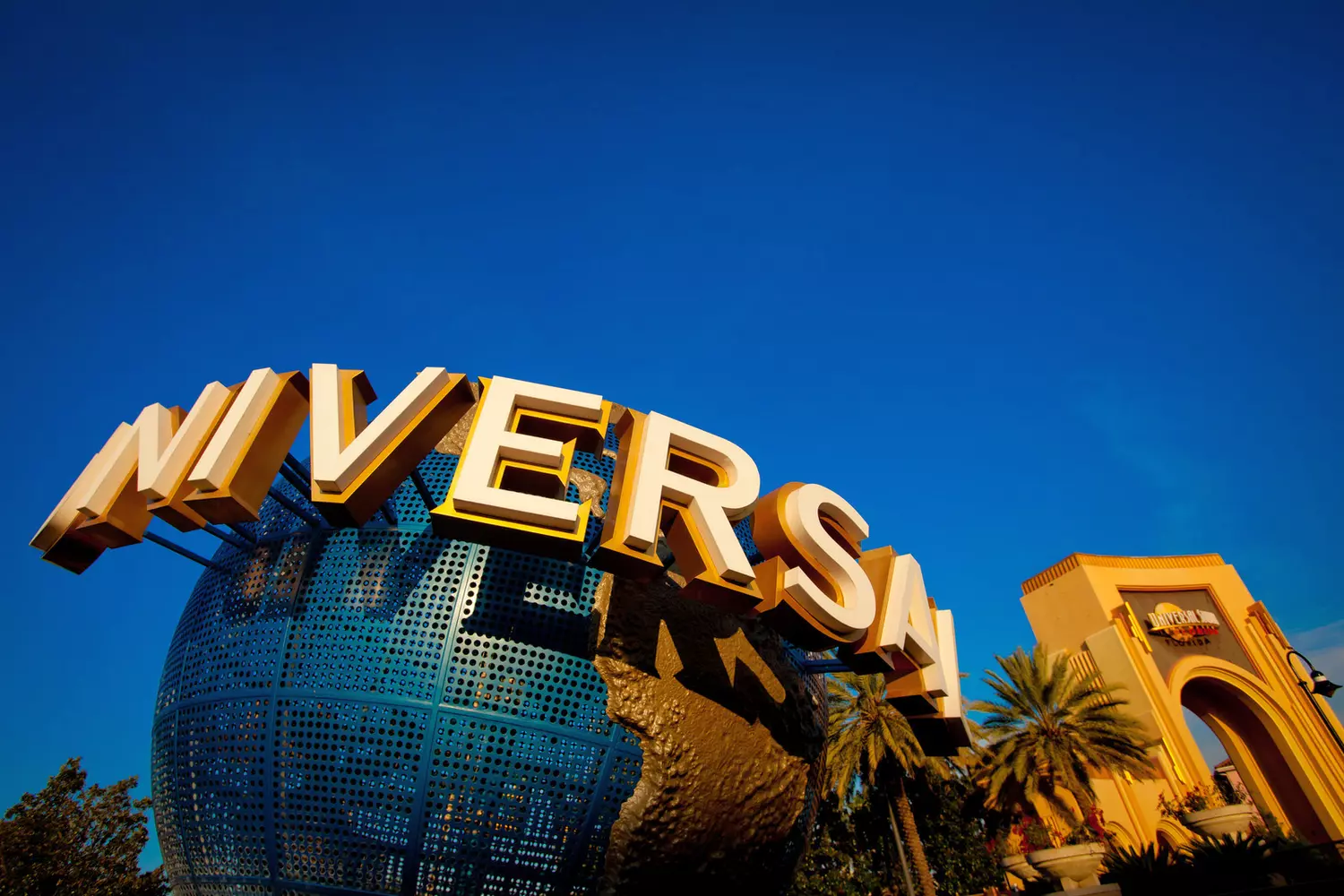In North America, there is a place where nature and humanity have learned to coexist in near-perfect harmony. Five vast lakes, connected by rivers, canals, and legends, stretch along the border between the USA and Canada, forming the largest freshwater system on the planet. These are the Great Lakes. Traveling through them is not just a change of scenery. It’s a journey into the heart of the continent, into its spirit, into the real America.
From the very first moments, you feel a different breath here. Everything seems more authentic: the sky — wider, the air — fresher, the people — calmer. Here, no one rushes; here, life flows alongside the water and follows its rules. The Great Lakes are a rare example of balance, where in a single day you can go from a bustling metropolis to a secluded bay with seagulls and fragrant pines.
Here, wild nature meets big cities, hiking trails meet ancient lighthouses, ferries meet skyscrapers. You can hear the sound of the waves and immediately — jazz from a street stage. Or simply watch the sunset and realize that you are part of something truly vast.
Five lakes that feel like oceans. Five bodies of water that hold the past and give the future. The Great Lakes are not just a destination on the map. They are a destination within yourself.
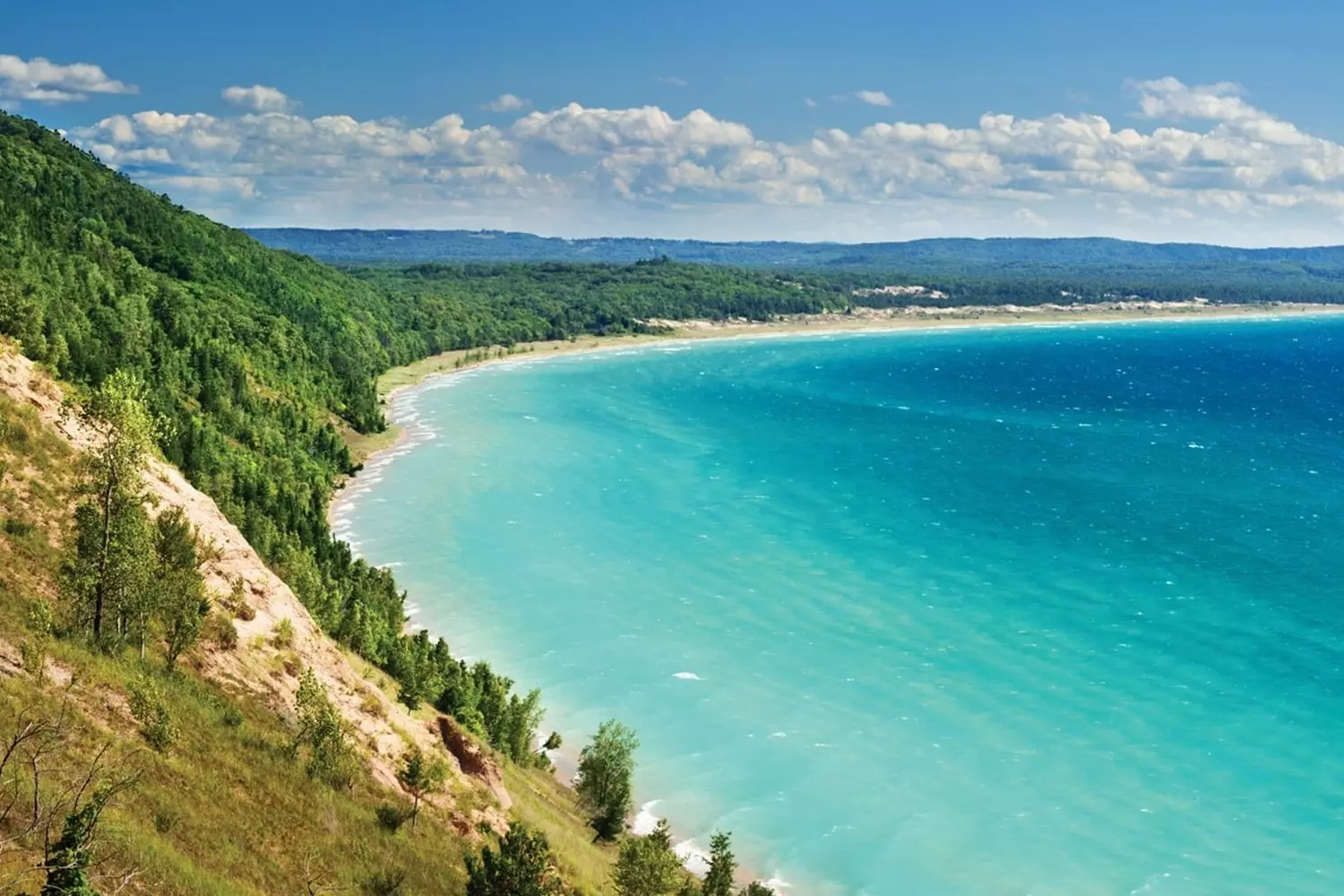
The Great Lakes hold about 22,671 cubic kilometers of water — that’s roughly 84% of all the fresh water in the USA and about 21% of the world’s fresh water supply! Imagine the incredible amount of life and activity supported by this unique water system!
Five Giants of North America: An Introduction to the Great Lakes
When people talk about the natural wonders of North America, they most often mention the Grand Canyon, Yellowstone, or Niagara. But few realize that the true giants of the continent are the Great Lakes. These five titans not only form the largest freshwater system on the planet but have literally redrawn the map of America, influencing trade, industry, and the lifestyle of millions.
Each of these lakes has its own character, history, and unique landscape. Together, they form a living organism that sustains cities, inspires travelers, and maintains a fragile balance between nature and civilization.
Geography of the Great Lakes: America’s Water Contour
Looking at a map of the USA from the north, the Great Lakes appear as giant imprints of nature’s hand along the Canadian border. They stretch in an arc from Minnesota to New York State, creating a unique region where water is the main architect of landscapes, economy, and human routes.
Where Are the Great Lakes Located?
- Lake Superior
Located the farthest north. It borders Minnesota, Wisconsin, and Michigan on the American side, as well as Ontario province in Canada. - Lake Michigan
Completely within the USA, washing the shores of Illinois, Indiana, Wisconsin, and Michigan. - Lake Huron
Shares shores between Michigan and the Canadian province of Ontario. - Lake Erie
Touches the states of Michigan, Ohio, Pennsylvania, and New York. - Lake Ontario
The easternmost link in the chain, lying along the border of New York and Ontario.
Cities on the Shores of the Lakes
Each of the Great Lakes has become a magnet for cities, each with its own face and history:
- Chicago (Illinois)
The largest city on the Great Lakes, located on the western shore of Lake Michigan. It is a center of architecture, blues music, and urban beaches. Chicago’s waterfront turns into a giant resort in summer. - Milwaukee (Wisconsin)
A cozy city on the western shore of the same lake. Known for legendary beer brewing, festivals, and preserving an industrial charm with a European flair. - Cleveland (Ohio)
Situated on the southern shore of Lake Erie. Once an industrial giant, now famous for the Rock and Roll Hall of Fame, gastronomy, and a renaissance of urban culture. - Buffalo (New York)
The western tip of Lake Erie. The city is experiencing a new wave of development due to its proximity to Niagara Falls and its status as a regional cultural center. - Detroit (Michigan)
Located near Lake Erie and connected to Lake St. Clair. Known as the city of cars and music, it stands on a water artery linking the lakes together. - Erie (Pennsylvania)
A small but picturesque city on the southern shore of the lake of the same name. An excellent choice for family water-side vacations. - Duluth (Minnesota)
The gateway to Lake Superior. Known for its ports, lighthouses, and fresh northern air.
The Great Lakes region is not just beautiful geography. It is a living system where every lake, city, and bay adds its own stroke to the overall picture. Here, you can travel from point to point, and the sense of a journey will never leave you. Geography turns into a script, and you become the main character in this story.
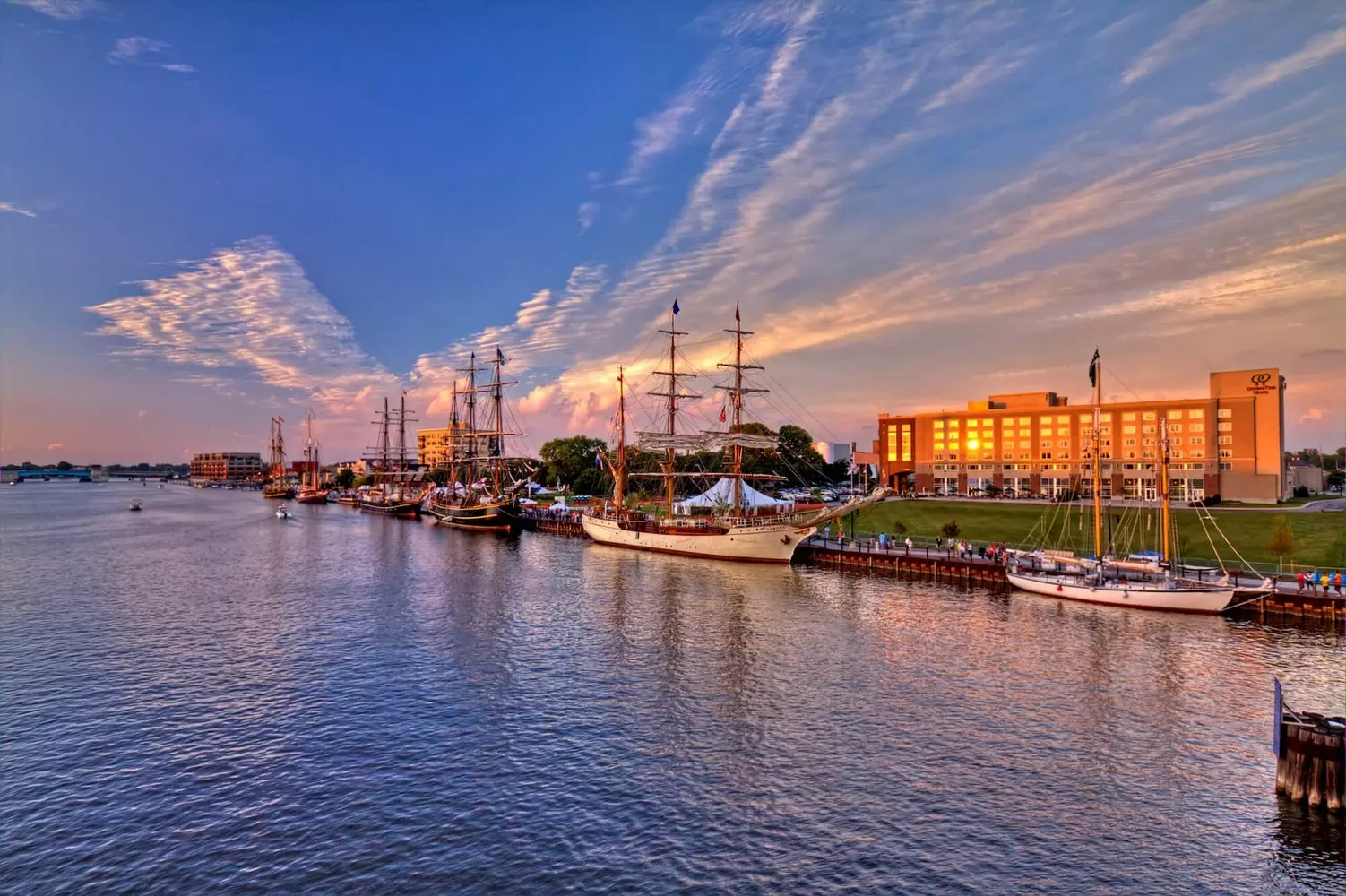
Lake Superior: The Rugged Beauty of the Great Northern Sea
At first glance, it may seem that this is not a lake at all, but a true sea. And this impression is not deceptive. Lake Superior is the largest freshwater lake in the world by surface area, stunning with its power, scale, and pristine nature. It stretches between the state of Minnesota, northern Wisconsin, and Michigan’s Upper Peninsula, while on the Canadian side its shores belong to the province of Ontario.
Everything here is imbued with the spirit of the North: dense coniferous forests, smooth rocky outcrops, clear cold water, and a deep sky into which it is easy to lose your gaze. Storms on Lake Superior are no joke: waves can reach heights of 6 meters or more, with swells comparable to those on the Atlantic coast.
- 01. What Makes Lake Superior Unique
- Located at an altitude of 183 meters above sea level;
- Depth reaches 406 meters — deeper than any of the other Great Lakes;
- Water temperature remains low even in summer, and visibility can reach up to 20 meters;
- The lake’s shores are wild and sparsely populated — perfect for those seeking solitude and unspoiled nature.
- 02. What to Definitely See and Experience
- Isle Royale National Park
A remote island park accessible only by ferry or seaplane. There are no roads or mobile coverage here, but there are wolves, moose, pine forests, and a sense of absolute solitude. Perfect for hiking, camping, and digital detox. - The city of Duluth
One of the main ports on Lake Superior. Here you can feel the balance between industrial heritage and natural forces. A stroll along the waterfront, a visit to the Lake Superior Maritime Visitor Center, lighthouses, and observation decks all reveal the spirit of the northern shore. - Pictured Rocks
Colorful cliffs along Michigan’s northern shore. Stone arches, waterfalls, sea caves, and crystal-clear water make this place ideal for kayaking, hiking, and boat tours. Especially magical at sunset. - Apostle Islands National Lakeshore
An archipelago off the coast of Wisconsin with ice caves that turn into frozen palaces in winter. In summer, it’s a paradise for kayaking, sailing, and camping enthusiasts.
Interesting fact: Lake Superior contains so much freshwater that it could cover the entire North and South American continents with a 30-centimeter layer. It is one of the most powerful and cleanest freshwater ecosystems on Earth.
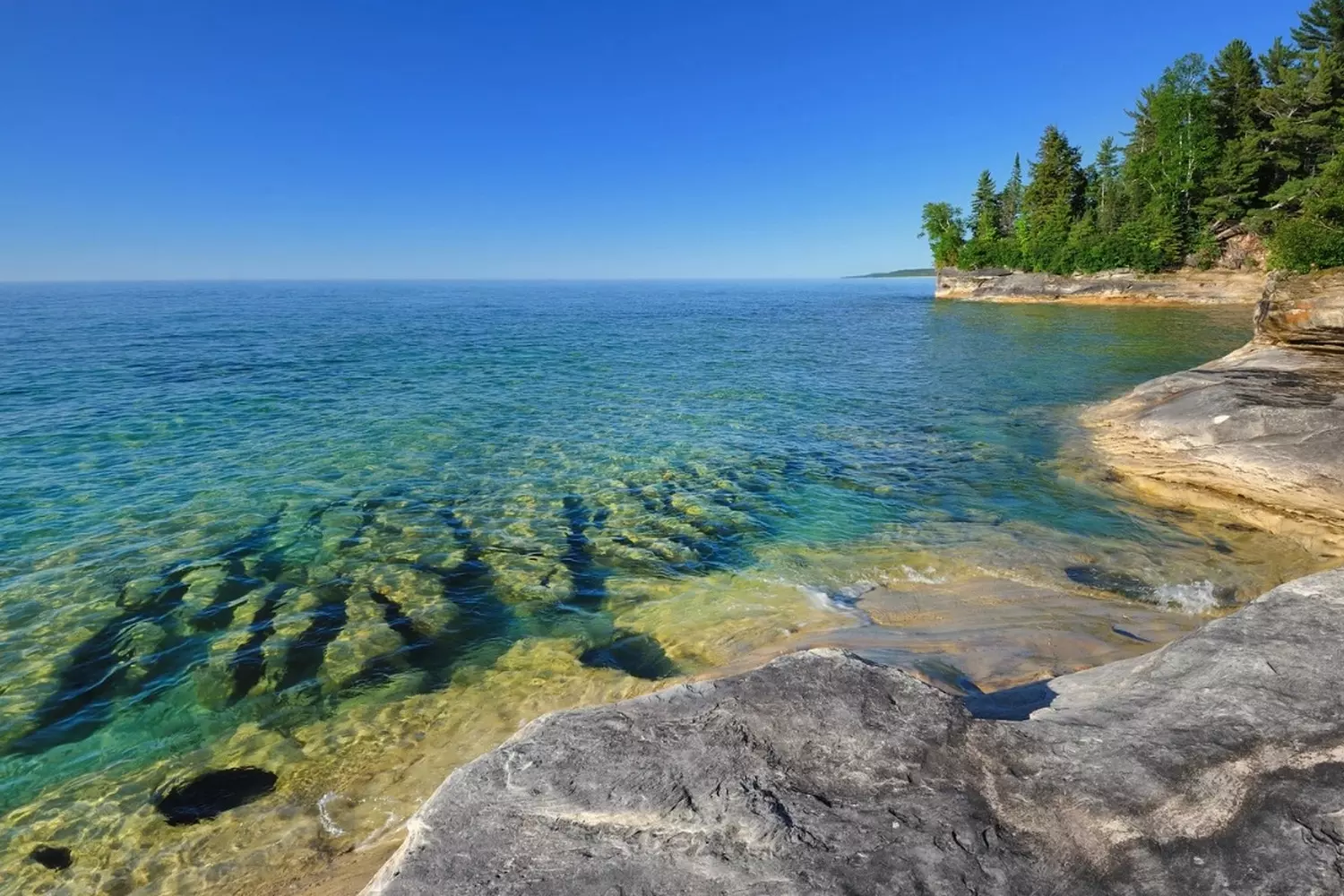
Lake Michigan: Between Urban Life and Sunset Splendor
Lake Michigan is the only one of the Great Lakes located entirely within the United States. This isn’t just a geographical fact — it’s key to its character: here, wild nature yields to urban life, and that’s its charm. Michigan is a lake of contrasts. On one side, the steel gleam of Chicago’s skyscrapers; on the other, the gentle waves at resort villages where you can walk barefoot on the sand and forget about everything else.
Unlike the harsh and wild Superior, Lake Michigan has become home to millions of people. Its waters caress the shores of four states — Illinois, Indiana, Wisconsin, and Michigan. Here, industrial heritage coexists with beach culture, vintage charm blends with high tech, festivals mingle with bike trails. Everything you need for a perfect trip.
- 01. Cities and Places Worth Visiting
- Chicago (Illinois)
A metropolis where water meets concrete and glass. Take a stroll along the Navy Pier, enjoy an architectural boat tour on the Chicago River, relax on North Avenue Beach, and don’t miss the observation deck at Willis Tower. Here, the lake isn’t just a backdrop — it’s part of city life. People swim, run along the waterfront, picnic, and listen to jazz by the water. - Milwaukee (Wisconsin)
A brewery city where the history of Harley-Davidson blends with European charm. Walk through the historic Third Ward, visit the Beer Museum, watch the sunset from the pier, and enjoy the atmosphere where the lake shore is turned into cozy parks and festival venues. - Holland (Michigan)
A small town with Dutch roots. In spring, the famous Tulip Time Festival fills the area with thousands of tulips blooming against the lake’s backdrop, creating a fairy-tale landscape. In the town center stands a working windmill, and local cafes serve stroopwafels with fresh flower bouquets on every table. - Traverse City (Michigan)
The northern gastronomic capital, famous for its wineries and cherry festival. A perfect place for a quiet lakeside retreat, water sports, and tasting local cuisine.
- 02. What to Expect from a Stay at Lake Michigan
- Many beaches — from urban to wild, with white sand and gentle water entry;
- Activities: kayaking, sailing, paddleboarding, bike paths along the shore;
- Local farmers’ markets, wineries, and breweries;
- Outdoor festivals almost year-round;
- The opportunity to combine urban excitement with natural relaxation in one trip.
Interesting fact: Lake Michigan is the only Great Lake entirely within the USA. Its area is about 58,000 km², and if it were a country, it would rank roughly 80th in the world by size.
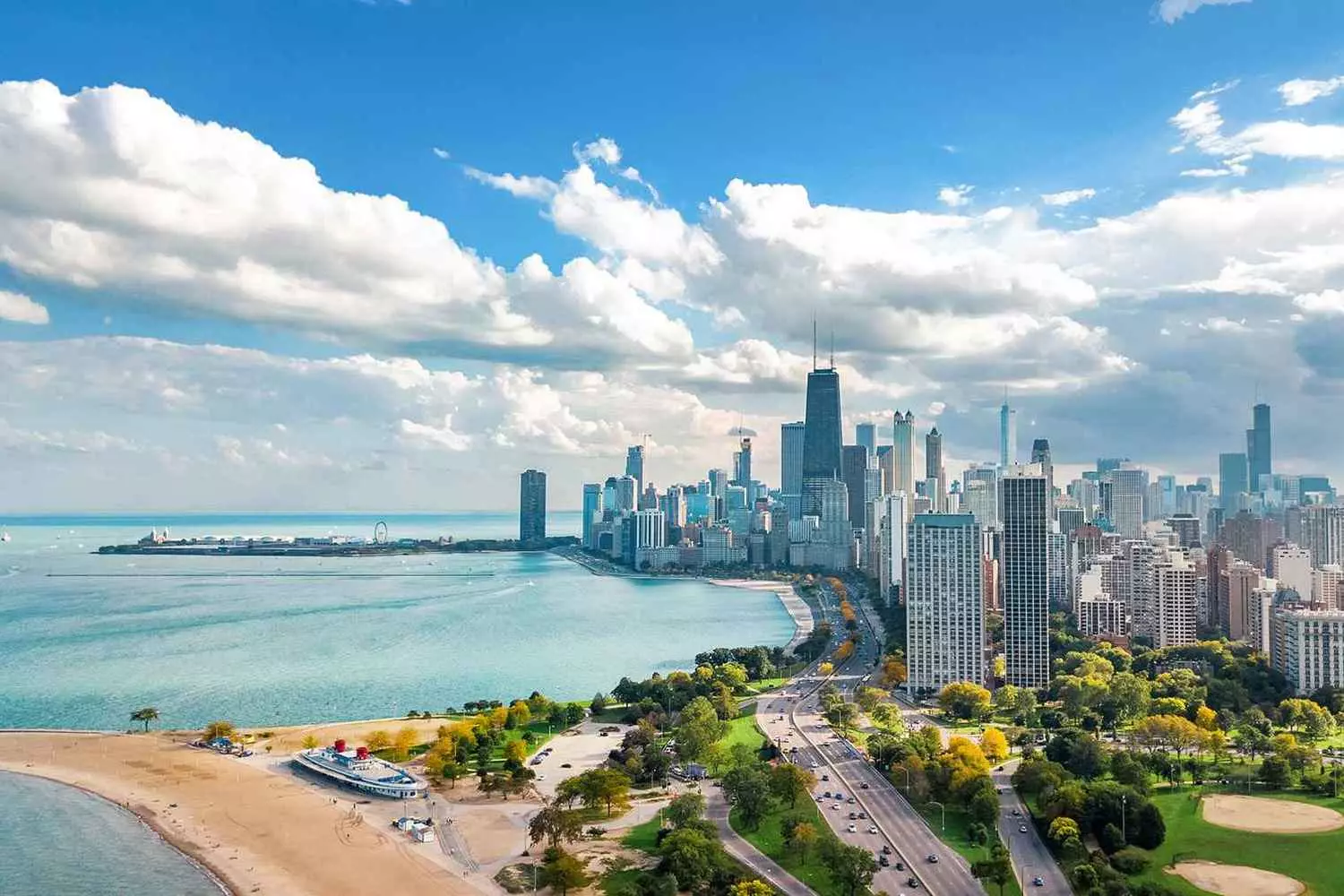
Lake Huron: The Land of Islands and Historic Lighthouses
If Lake Superior embodies pristine power, and Lake Michigan represents urban comfort, then Lake Huron is all about tranquility, scattered islands, and the romance of lighthouses. This lake seems made for those seeking calm and unhurried contemplation. Its waters wash the eastern coast of Michigan and western Canada, with one of the longest shorelines among all the Great Lakes.
The main highlight of Huron is Manitoulin Island, the world’s largest freshwater island. On Manitoulin itself, there are over a hundred lakes — literally lakes within a lake. Add to this historic villages, untouched beaches, endless forests, and countless bays, and you get a perfect landscape for nature lovers.
- 01. What to See and Experience on Huron
- Manitoulin Island
A special place attracting visitors looking for true solitude, indigenous Anishinaabe culture, hiking trails, and fishing. Local festivals, art galleries, farms, and silence create a unique retreat for the soul. - Michigan Coast: Thunder Bay, Alpena, and Tawas City
Small, authentic towns rich in maritime history. Here you can explore shipwrecks in underwater preserves, visit the Great Lakes Maritime Heritage Center, see working lighthouses, and embark on kayak or boat tours. - Huron’s Lighthouses
Scattered along the coast are dozens of historic lighthouses, many still operational. The most famous is Pointe Aux Barques Lighthouse. These are true symbols of the region, perfect for photos and immersing yourself in 19th-century atmosphere. - Swimming Among the Georgian Bay Islands
If you want to feel like an explorer, take a tour of this scenic bay filled with thousands of islands. Among the rocks and pines, you may spot seagulls, cormorants, and even bald eagles.
- 02. What Makes Huron Different from Other Lakes
- It is the second largest Great Lake by area but has the longest shoreline — over 6,000 kilometers;
- The lake is famous for its crystal-clear water and shallow bays;
- One of the best regions for cabin cruises and sailing tours;
- A perfect place for those wanting to escape civilization without losing touch with history.
Interesting fact: Geographers consider Georgian Bay so large, self-sufficient, and full of islands (over 30,000!) that it could be regarded as a sixth Great Lake.
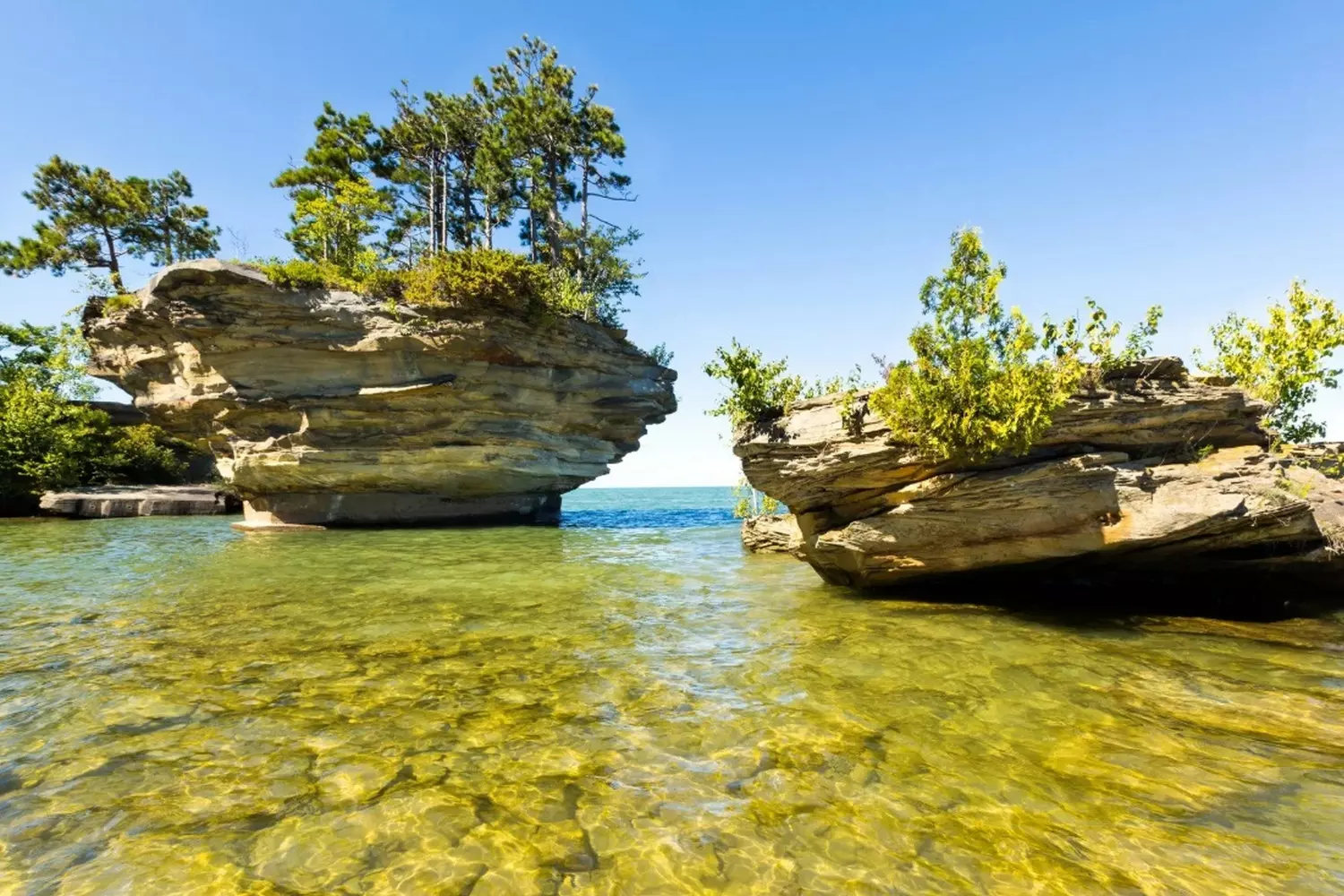
Lake Erie: Sunshine, Wineries, and Family Fun
Of all the Great Lakes, it is Lake Erie that offers the most warmth — both in climate and in human spirit. It is the shallowest of the five lakes, which means it warms up the fastest. During the summer months, its waters become a true magnet for families, tourists, and anyone who enjoys relaxing by the water without the harshness of wilder shores.
Situated between the states of Michigan, Ohio, Pennsylvania, and New York, Lake Erie is known for its sandy beaches, active boating scene, and fertile shores. It’s also one of the most important winemaking regions in the U.S.: thanks to its mild microclimate, excellent grapes are grown here, producing fragrant white and sweet wines.
- 01. Where to Go and What to Try
- Presque Isle Park (Pennsylvania)
A narrow sandy peninsula within the city of Erie, turned into a national park. It features beaches, bike paths, birdwatching towers, and even a historic lighthouse. A great place for a family picnic or a leisurely stroll. - Put-in-Bay (Ohio)
A resort island with a surprisingly lively vibe. Mini-golf, bars, historic forts, museums, and boat tours — all within walking distance. Perfect for a getaway with kids or friends. - Finger Lakes Wineries (New York)
Although this wine region is closer to Lake Ontario, its climate is largely influenced by Lake Erie. Some of the best Rieslings in the U.S. are produced here, and wine tours are a separate kind of pleasure. It’s easy to combine gourmet experiences with natural beauty. - Cleveland (Ohio)
A major city on the lake’s southern shore, perfect for an urban stop. The Rock & Roll Hall of Fame, botanical garden, waterfront, and restaurants — you could easily spend a couple of vibrant days here.
- 02. What Makes Lake Erie Special
- The shallowest of the Great Lakes (average depth — just 19 meters), which makes it the warmest and most swim-friendly.
- Fewer storms than other lakes, and the water warms up quickly — swimming is possible as early as June.
- Ideal for fishing, especially for walleye, perch, and pike.
- The lake’s shores are fertile and green — perfect for agritourism and culinary routes.
- Numerous beaches, campgrounds, wineries, and family amusement parks.
Interesting fact: During the War of 1812, one of the most important naval battles between the U.S. and British fleets took place on Lake Erie. The Americans won, securing control of the lake and gaining a vital strategic advantage. Today, South Bass Island is home to a monument commemorating that battle — Perry’s Victory and International Peace Memorial.
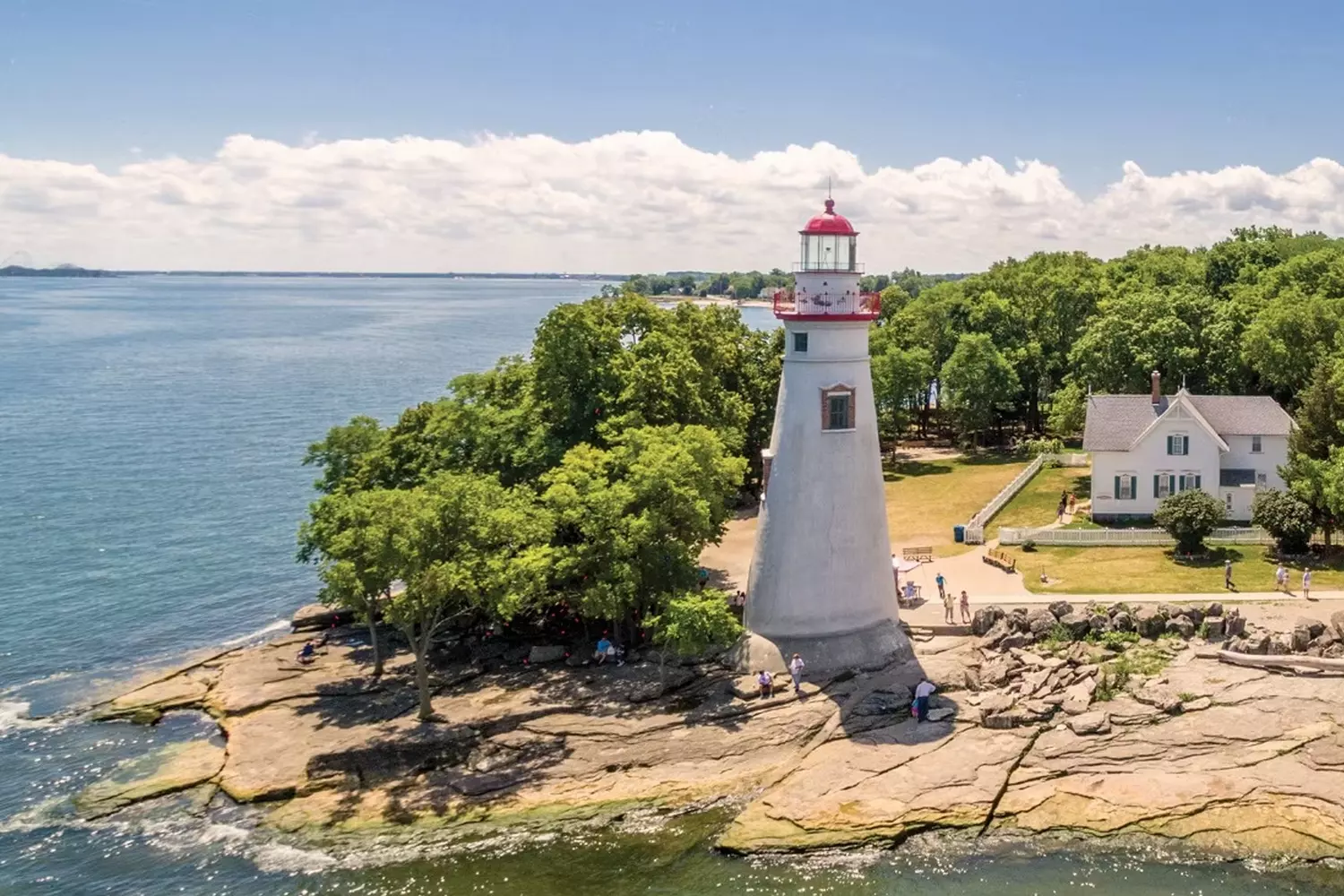
Lake Ontario: Gateway to the Ocean and Spirit of the Old World
The smallest by area but by no means by significance — Lake Ontario holds a special place within the Great Lakes system. It is from here, through the Saint Lawrence River, that the waters exit the continent and flow toward the Atlantic Ocean. These are the true gateways between North America and the rest of the world — both naturally and culturally.
Ontario is a crossroads lake. Trade routes converge here, along with historical battles, French and British colonial architecture, vibrant cities, and pristine natural corners. Unlike the “picnic-style” shores of Lake Erie, here you feel the breath of history and the serious pulse of movement: port cranes, international freighters, urban development — all framed by water, pines, and cliffs.
- 01. Cities and Attractions on Lake Ontario’s Shores
- Rochester (New York)
This city is known for its parks, the Eastman Kodak museum, and breathtaking views of the lake from its historic piers. - Sackets Harbor (New York)
A small settlement with the charm of a historic maritime town. It’s home to a U.S. Navy museum and excellent sunset-viewing spots.
- 02. What Makes Lake Ontario Unique
- It marks the final stretch of the Great Lakes before the waters flow into the Atlantic — via the Saint Lawrence River.
- One of the region’s deepest lakes: depths reach up to 244 meters.
- Fewer beaches, more cliffs and ports, giving it a more “oceanic” character.
- A wealth of cultural routes — from forts and lighthouses to galleries and theaters.
- 03. Natural and Cultural Routes
- Thousand Islands
A picturesque archipelago on the U.S.-Canada border. Each island tells a story — with a castle, mansion, or historical landmark. Dozens of boat tours weave through this stunning landscape. - Niagara-on-the-Lake
A charming wine region near Niagara Falls, perfect for pairing wine tastings with historic strolls and evening plays in a Victorian-English style setting. - Autumn on Lake Ontario
This alone is a reason to visit. The surrounding forests blaze in red and gold, and morning fogs over the water turn each sunrise into a painting.
Interesting fact: Though Lake Ontario is the smallest in surface area, it handles over 40 million tons of cargo each year. This makes it one of the key links in global logistics — and the only Great Lake directly connected to the ocean.

When the Ice Moved Across the Land: The Geological History of the Great Lakes
Where billions of tons of freshwater now splash, there once lay an ice sheet a kilometer thick. The Great Lakes aren’t just bodies of water — they’re a legacy of the Ice Age, a scar on the continent’s surface that nature, over millions of years, transformed into a necklace of water giants.
- 01. How the Great Lakes Were Formed
Around 2 million years ago, during the Pleistocene epoch, massive ice sheets covered the northern part of the continent — powerful glaciers moving with the force of mountains. These glaciers slowly crept southward, leveling the terrain, pressing into the crust, scraping rocks, and displacing water. When the climate began to warm, around 12,000 to 10,000 years ago, the glaciers started to melt, leaving behind massive depressions. These basins became the cradles of today’s lakes. But it’s not so simple — each of the Great Lakes has its own geological “DNA.”
- Lake Superior lies on the ancient Canadian Shield — hard crystalline rocks over 2.5 billion years old. The lake is literally carved into granite, giving it rugged shores and deep troughs.
- Huron and Michigan were shaped by a combination of tectonic downwarping and glacial erosion. These lakes are “pressed” into softer rock layers, resulting in gentler shores, numerous bays, and islands.
- Erie is the youngest and shallowest of the lakes. Its basin formed in a lowland area that offered little resistance to glacial pressure. Geologically, it’s carved almost to the level of groundwater — explaining its warmer temperatures and fertile shores.
- Ontario is the most “oceanic” in form: its basin is a former prehistoric riverbed, widened and deepened by glaciers. The depression is steep and deep, with a rugged shoreline and fast-flowing river mouths.
- 02. Geology and the Modern Landscape
- The soils around the Great Lakes are glacial deposits — a mix of clay, sand, gravel, and boulders. This is why the land around the lakes is so fertile, especially near Lake Erie.
- Rock outcrops like Pictured Rocks on Lake Superior and the Niagara Escarpment between Erie and Ontario are geological “time capsules.” They reveal layers of the Earth’s crust that are millions of years old. These cliffs and canyons attract not only tourists but geologists from around the globe.
- The lakes continue to shape the terrain: shorelines are constantly reshaped by waves, ice, and currents. Some islands appear and disappear within decades, and water levels can fluctuate by meters.
- 03. Cities Built on Geological Foundations
- Chicago stands on the former shoreline of ancient Lake Chicago, the predecessor of Lake Michigan. The city flourished thanks to a canal connecting the Great Lakes to the Mississippi River.
- Duluth is a port city built on granite cliffs. Its location owes much to a tectonic basin that formed Lake Superior.
- Cleveland and Buffalo lie on a geologically active zone where the glacier left especially soft sediments, making these areas major transport hubs.
Interesting fact: At the bottom of the Great Lakes lie not just rock formations, but frozen artifacts. Due to low temperatures and poor oxygen access, hundreds of sunken ships — many over 150 years old — remain perfectly preserved.
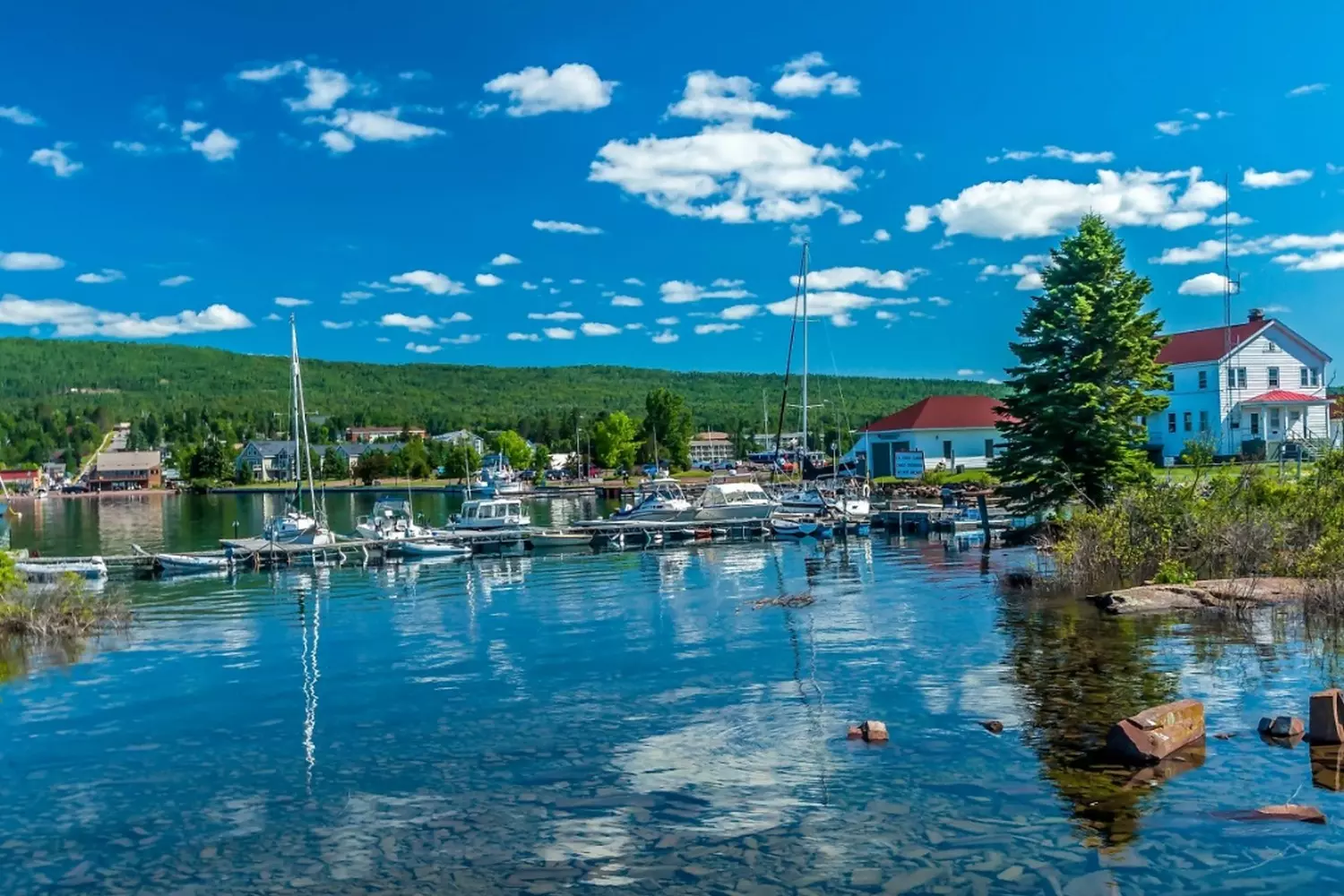
Climate and Ecosystem of the Great Lakes: The Living Organism of a Continent
The Great Lakes are not just bodies of water — they’re a climate engine capable of changing the mood of an entire region. They create their own microclimate, generate fog, storms, snow squalls, and at the same time — fertile lands, unique fauna, and conditions for the lives of millions of people and species.
This ecosystem works like clockwork. But it’s a delicate mechanism in which everything is interconnected: from tiny algae to major cities on the shores. And the deeper we look, the more we understand: the Great Lakes are not just scenic views, but the pulsing heart of northeastern America.
- 01. Climatic Features of the Region
The Great Lakes region as a whole lies in a temperate continental climate zone, but with a very noticeable influence from the lakes. Here’s what makes the lakes true climate sculptors:
- Summers are mild yet humid
Especially in the areas around Michigan, Erie, and Huron. Water temperatures can reach 23–26°C, and the air is filled with a marine breeze even far from the coast. - Winters are snowy and windy
The lakes cause the so-called lake-effect snow — when cold air moves over relatively warm water, it picks up moisture and then releases massive snowfall onshore. The result: cities like Buffalo and Erie are among the snowiest in the U.S. - Spring arrives late
Because the lakes take a long time to cool down. On the other hand, autumn is long and colorful: the foliage burns in amber tones, and lake storms become part of the visual spectacle. - Winds on the lakes
Are strong year-round, especially during transitional seasons. This makes the region a favorite spot for kite surfers, sailors, and lovers of “wild” waves.
- 02. Wildlife of the Great Lakes
Thousands of animal species depend on the lake ecosystem, and some are found only here:
- White-tailed deer, beavers, and coyotes — inhabit the coastal forests.
- Turtles, muskrats, and river otters — live in the marshy areas and lagoons.
- More than 350 species of birds — including rare bald eagles and sandhill cranes. The Great Lakes are one of the key stops along North America’s migratory routes.
- Salmon, trout, walleye, pike, and bass — are popular among both sport fishers and local residents.
- Freshwater mussels and sponges — naturally purify the water, acting as “natural filters.”
- 03. Natural Zones
All along the shoreline, you can find unique ecosystems:
- Pine and spruce forests and taiga — in the north of Lakes Superior and Huron.
- Deciduous forests with maples and oaks — around Erie and Ontario.
- Sand dunes — for example, in Indiana Dunes National Park.
- Marshy floodplains and coastal bays — perfect for bird nesting and fish breeding.
- Cliffs and granite ledges — especially around Lake Superior, create natural viewpoints and habitats for mountain plants.
Fun fact: sturgeons — which date back over 150 million years — once thrived in the Great Lakes. Today they are rare, but restoration programs are gradually bringing them back into the ecosystem.
Why does this matter for a traveler?
When you travel through the Great Lakes region, you become part of a greater natural cycle:
- You breathe air saturated with lake moisture.
- You swim in water filtered by mussels and forests.
- You watch birds that have flown halfway across the world to nest on these shores.
- And, if you wish, you can contribute — support ecotourism, leave no waste behind, and join local environmental initiatives.
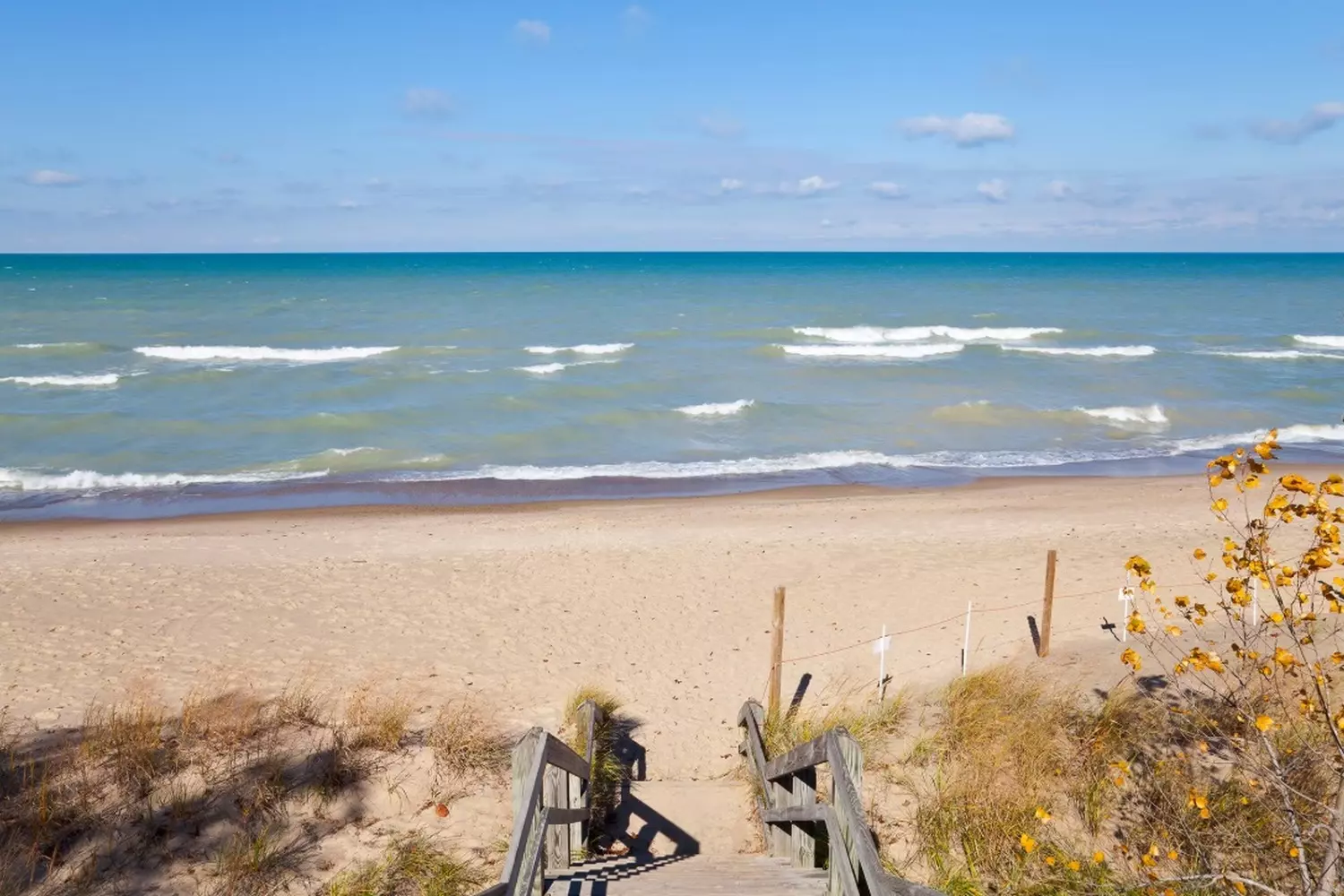
The History of the Great Lakes: From Canoes to Steamships, from Legends to Factories
When you look at the smooth surface of the Great Lakes, it feels as if they’ve always been this way — calm, powerful, eternal. But beneath that surface lies thousands of years of history, drama, battles, discoveries, and hard work. The Great Lakes are not just geography; they are a living chronicle of North America, written in water, wood, and steel.
- 01. Before Europeans: land of spirits and water
Long before maps and ships appeared, the lake shores were home to many Indigenous peoples: Ojibwe, Iroquois, Mohawk, Huron, Erie, and others. To them, the Great Lakes were not just a resource but a sacred part of the world — a place of power, myths, and tradition.
- Fishing, hunting, and seasonal migrations — all were tied to the rhythms of the lakes.
- Spiritual culture included legends of water spirits, “manitou”, and beings that guarded the waters.
- Birchbark canoes — the main mode of transportation. Light and agile, they allowed for trade, war, and travel across hundreds of kilometers.
- 02. The Age of Discovery and Colonization
The 17th century brought French and British explorers. That’s when the lakes became known to Europe as a system linking inland regions with the Atlantic.
- Samuel de Champlain and Jacques Marquette were the first to describe Huron and Michigan.
- Missionary posts, fur trade caravans, and wooden frontier forts appeared.
- Fur trading became the driving force: beaver pelts were worth their weight in gold in Paris and London.
- 03. 18th–19th Centuries: Wars, Borders, and Steamships
From the late 18th century, the lakes became a battleground for influence between Britain and the young United States.
- The American Revolutionary War and especially the War of 1812 included fierce naval battles right on the lakes. The Battle of Lake Erie was pivotal — the U.S. gained control of critical routes.
- By the mid-19th century, steamship transport emerged. The lakes became an industrial artery: cargo, oil, ore, grain, coal — all moved between ports and factories.
- Canals and locks were built — most notably the Welland Canal, which allowed ships to bypass Niagara Falls and connect Lakes Erie and Ontario.
- 04. Industrialization and Regional Boom
From the late 19th to the mid-20th century, the Great Lakes region became the heart of industrial America:
- Detroit produced automobiles.
- Chicago — steel and machinery.
- Buffalo and Cleveland — hubs of heavy industry, ports, and factories.
- Immigrants from Europe and the southern U.S. flocked to the lake cities seeking work and a better life.
During this time, the lakes became the economic superhighway. New ships emerged — the so-called “lake freighters” over 300 meters long, capable of carrying 70,000 tons of cargo in one trip.
- 05. 20th Century: Environmental Awakening
With industrial growth came consequences:
- Water pollution — especially in Lake Erie.
- Declining fish populations, algal blooms, and “dead zones.”
- In 1969, the Cuyahoga River (flowing into Lake Erie) famously caught fire — the water (!) ignited due to spilled petroleum products.
This became a turning point — it sparked the environmental movement, led to the creation of the EPA (Environmental Protection Agency), and to U.S.–Canada agreements to protect the lakes.
- 06. Today: Preserving the Legacy
Today, the Great Lakes are a blend of tourism, history, science, and economy:
- Dozens of historic forts, lighthouses, and locks have been restored.
- Festivals, reenactments, and ethnographic tours are held.
- Open-air museums are active — from the Great Lakes Museum in Toledo to the Maritime Museum in Milwaukee.
- Ecological programs continue to restore local flora and fauna.
Fun fact: in the Ojibwe language, the word “Gichigami” means “great sea.” French settlers later adapted this into “Chicagou”, which eventually became the name of the city: Chicago.
The history of the Great Lakes is the history of America. From canoes to freighters, from the songs of Indigenous shamans to the roar of factory sirens, from sailing ships to steel giants — the story of the region is written on the water. And traveling across the Great Lakes today, you’re literally gliding over the pages of this remarkable and vital book.
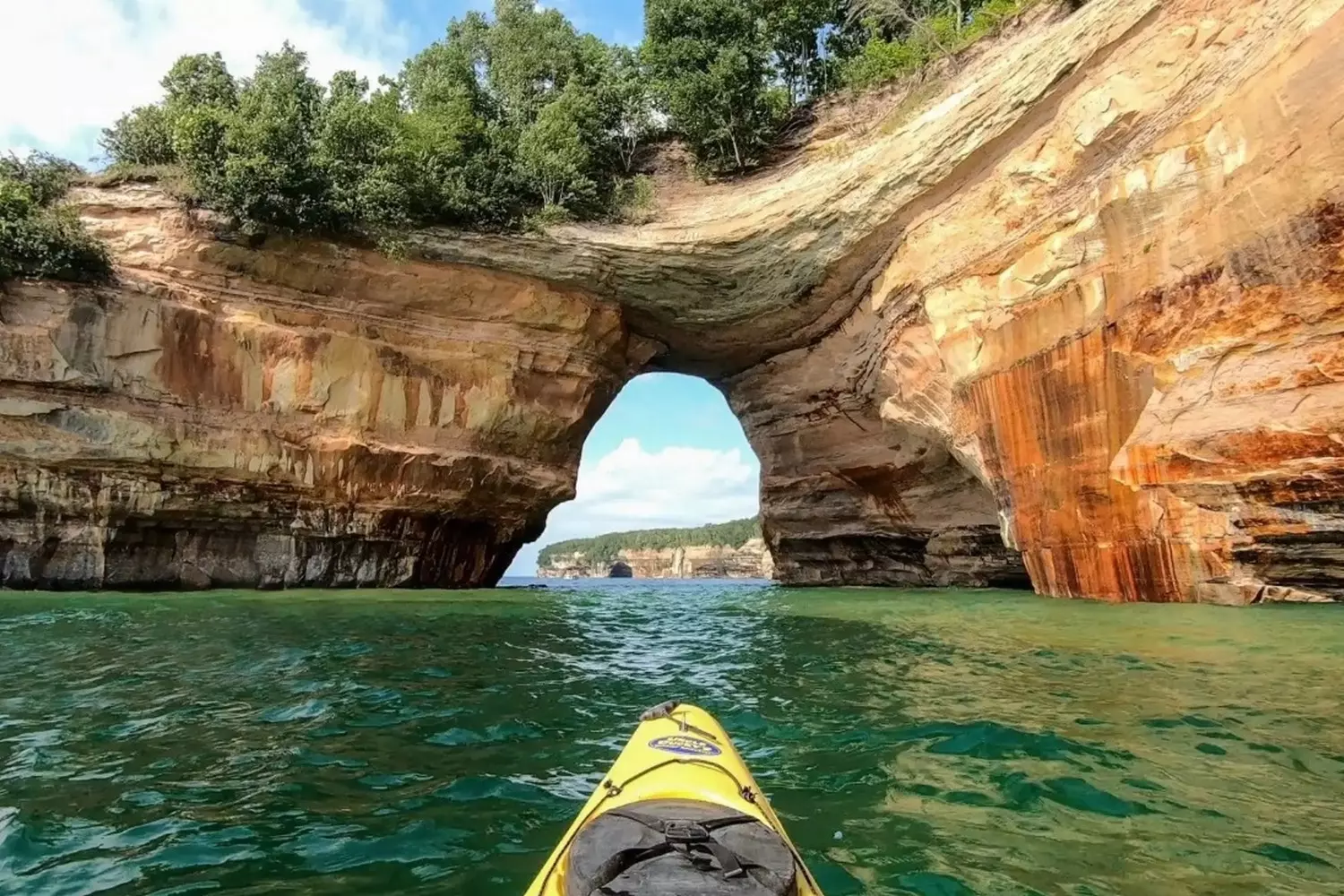
The Great Lakes: The Economic Engine of the USA Beneath the Water’s Surface
From a bird’s-eye view, the Great Lakes seem peaceful and untouched — like a backdrop for landscapes and leisure. But come closer, and a completely different picture emerges. These lakes are a true economic engine of America. Trade routes were carved here, factories launched, and tons of ore and grain shipped. All of it — beneath the calm surface, in the depths where work never stopped.
- 01. Iron, Coal, and Steel: How the Lakes Forged America
The Midwest’s steel industry literally grew up along the shores of the lakes. But why here?
- Iron ore is mined in Minnesota, near Lake Superior (the Mesabi Range). From there, it's easily transported by water to industrial centers.
- Along the lakes are steel giants: Detroit, Cleveland, Milwaukee, Chicago — all tied to metallurgy.
- Coal came from the Appalachians via the ports of Erie and Buffalo and was sent to blast furnaces.
- Thanks to the lakes, steel could be smelted right on the shore, minimizing logistics costs.
This very steel built Chicago’s skyscrapers, Detroit’s cars, and the nation’s railroads.
- 02. Hydropower: Energy from Water
Though the Great Lakes are mostly calm, they feed powerful hydroelectric stations, primarily at Niagara Falls.
- Niagara Hydroelectric Station is the region’s largest. It supplies electricity to millions of homes in the U.S. and Canada.
- Smaller hydro plants have also been built on rivers connecting the lakes, providing clean energy to cities and industry.
- This is a sustainable energy source that helps reduce dependence on coal and gas.
- 03. Fishing and Food Industry
- The Great Lakes are a source of freshwater fish: walleye, salmon, pike, trout, white perch. Despite restrictions, the annual catch totals tens of thousands of tons.
- The lake regions are centers for fish processing and packaging — especially in Wisconsin and Michigan.
- The lakes irrigate millions of hectares of farmland that supply the U.S. with grain, corn, soybeans, fruits, and vegetables.
- Along the shores are wineries and creameries that make use of mineral-rich glacial soil.
- 04. Tourism and Leisure — An Emotion-Based Economy
- More than 20 million people travel across the Great Lakes every year.
- Urban tourism (Chicago, Toronto, Milwaukee), nature parks, fishing, yachting, camping, and festivals generate billions in revenue.
- The strongest infrastructure is found along Lakes Michigan, Huron, and Erie: marinas, boat rentals, lakeside restaurants, and hotels.
- In recent years, ecotourism has been booming: hiking, kayaking, bird watching, and shoreline restoration programs.
- 05. Technology, Logistics, and Science
- Innovation clusters have sprung up along the lakes: research centers, universities, laboratories studying freshwater and climate change.
- The region is becoming a hub for sustainable technology: water purification, renewable energy, “green” ports, and logistics.
- Ports in Chicago, Detroit, and Toronto have automated cargo terminals that rival coastal ports.
The Great Lakes region generates about 30% of the GDP of the U.S. and Canada. It’s not just a water surface — it’s a vital system. They feed, power, inspire, transport, and heal. And whether you come here for business or for the experience, know this: beneath these clear waters beats the true economy of America — with history, with future, and with thousands of opportunities.
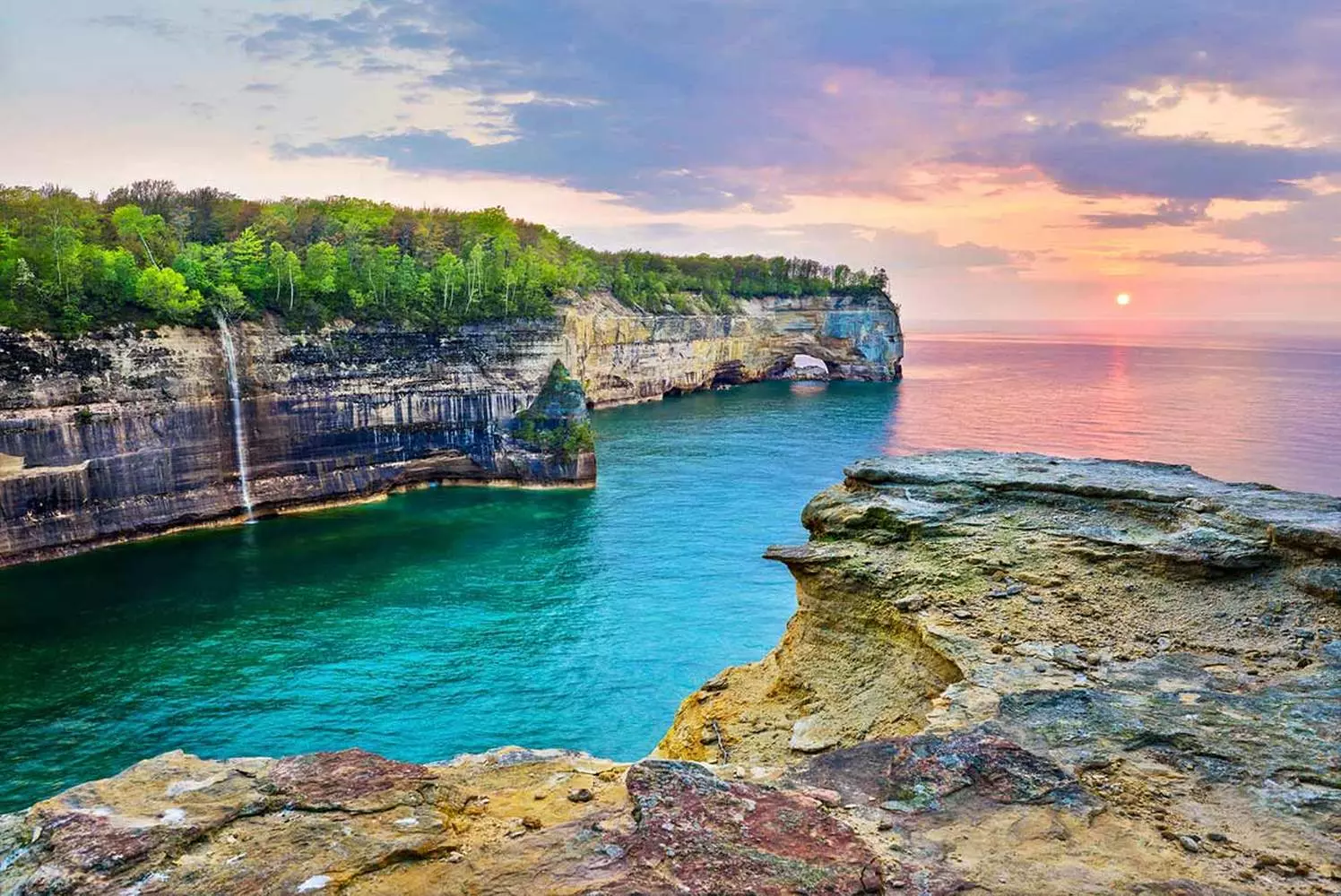
The Water World in Motion: Transportation and Ports of the Great Lakes USA
At first glance, they’re just lakes. Freshwater, vast, calm. But in reality, they’re a bustling transportation system, traversed by cargo ships the length of skyscrapers, tourist liners, and fishing boats. The Great Lakes are not just “leisure water.” They are the arteries of economy and logistics, linking inland America with the Atlantic, Canada, and the rest of the world.
- 01. The Saint Lawrence Seaway: An Artery from the Heart of the Continent to the Ocean
Created in the mid-20th century, the Saint Lawrence Seaway is a monumental engineering project that connects the Great Lakes with the Atlantic Ocean. In other words, a ship can start in Minnesota and end its journey in Liverpool without ever leaving the water.
- Length — approximately 3,700 km from the western shore of Lake Superior to the mouth of the Saint Lawrence River.
- The system includes 15 locks, numerous canals, and control dams.
- Allows passage for vessels up to 225 meters long (Seawaymax) with a draft of up to 8 meters.
This route is unique: the U.S. interior has direct sea access — a major strategic and economic advantage.
- 02. The Largest U.S. Ports on the Great Lakes
The Great Lakes ports aren’t just waterside warehouses. They’re massive complexes with terminals, rail hubs, factories, grain elevators, and processing facilities. They connect the Midwest to the rest of America and export goods worldwide.
- Duluth–Superior Port, Minnesota/Wisconsin
The primary “ocean” port in the lake system. Specializes in iron ore, grain, coal, and cement. Receives ships from Europe and Asia via the Saint Lawrence Seaway. One of the few ports where some cargo is still loaded by hand — tradition runs deep. - Chicago Port, Illinois
Located on Lake Michigan, connected to the Illinois Waterway. A major logistics hub: cargo, oil, containers, food products. Linked to the U.S.'s largest rail and highway systems. Proximity to O’Hare International Airport makes it strategically vital. - Toledo Port, Ohio
A versatile port on Lake Erie. Specializes in grain, oil, coal, and industrial materials. Notable for having the largest grain storage facility in the Great Lakes region. - Cleveland Port, Ohio
Focuses on container and general cargo, metallurgy, and machinery. Strongly integrated with the Midwest manufacturing sector. Also serves cruise lines and passenger routes. - Milwaukee Port, Wisconsin
Main exports: cement, salt, grain, and construction materials. Handles bulk carriers, tankers, and container ships. Well-developed infrastructure for yachts and cruise liners. - Burns Harbor Port, Indiana
A modern industrial port tied to the steel giant U.S. Steel. Serves vessels on Lake Michigan, handling ore, wire rod, billets, and pipes.
- 03. Why Does This Matter?
- 80% of the iron ore needed for U.S. steel production is delivered via the lakes.
- The cost of waterborne shipping is 30–60% lower than rail or truck transport.
- Lake ports are major export centers for grain, coal, fertilizers, and industrial goods.
- Over 230 million tons of cargo pass through them each year.
- 04. Tourism and Cruises — Also Part of the Transportation System
- “Port-to-port” cruise routes are actively developing in the region.
- The number of hybrid vessels — part-tourism, part-logistics — is growing.
- Ports in Chicago, Detroit, and Cleveland host international cruise ships.
- This creates jobs, revitalizes the coastal economy, and boosts interest in ecotourism.
The Great Lakes are the heart of industrial America. They offer not just fish, leisure, and inspiration — they drive the economy. Today you see the calm water and the sunset — but beneath that surface flows metal, fuel, grain, and the future. This is a real transportation network — living, powerful, invisible, yet essential.
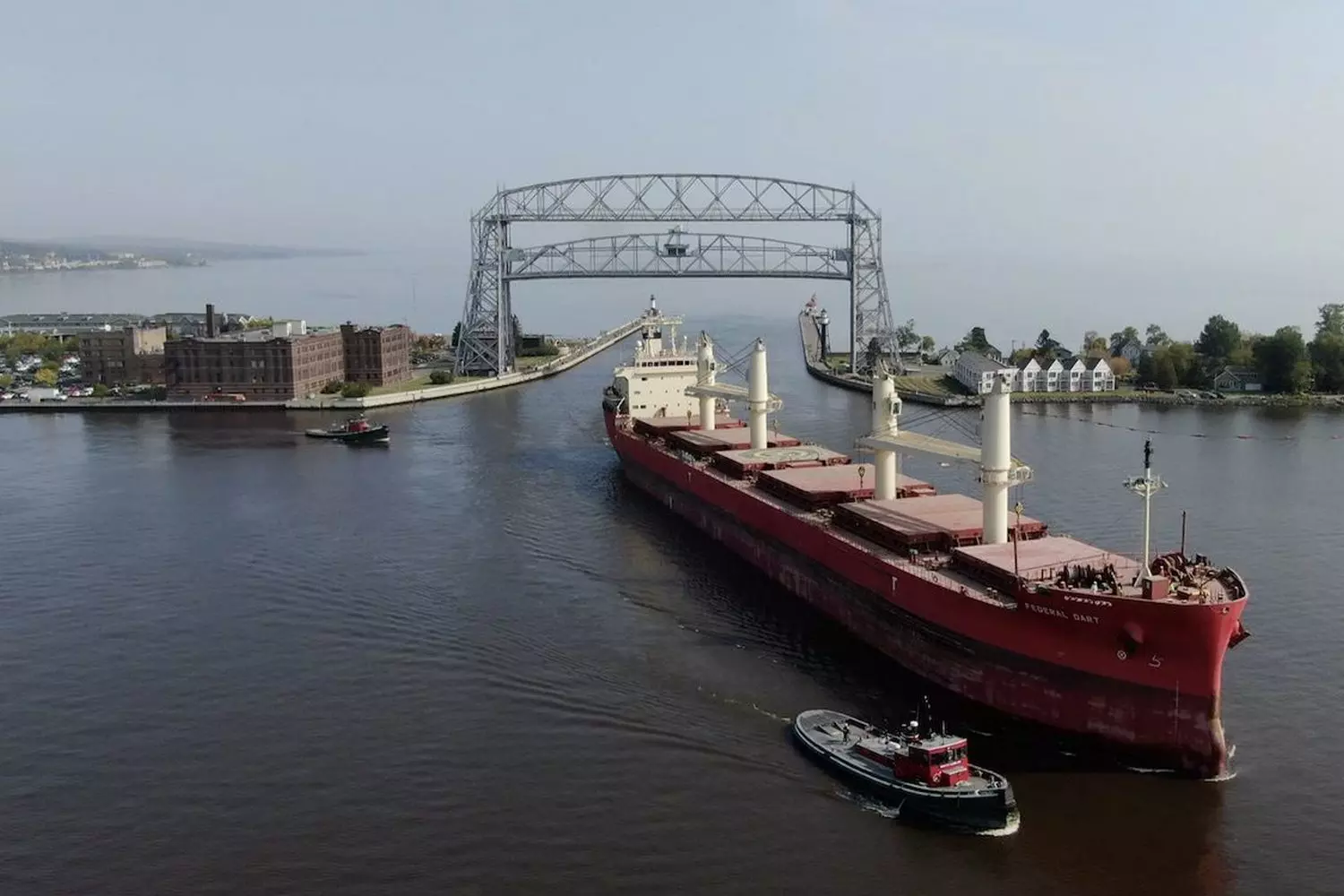
Ernest Hemingway: Biography of a Great American Writer
The Great Lakes Under Threat: How to Preserve the Purity of the World's Largest Freshwater Wonder
At first glance — a smooth water surface, an endless horizon, forests reaching the sky, and the cleanest air. The Great Lakes seem untouched. But beneath this surface lie problems not always visible to the naked eye. Like any great natural wonder, the lakes require not only admiration but also protection.
After all, these are not just landscapes — they hold 20% of the world’s fresh water, more than 40 million people living along their shores, and thousands of species of flora and fauna that depend on this water system.
Main Environmental Threats
- 01. Invasive Species
- Zebra mussels, brought from Europe, have proliferated in the lakes, displacing native species and filtering plankton.
- Asian carp — another aggressive invader threatening ecosystems and fisheries.
- These species disrupt the fragile biodiversity and can completely alter food chains.
- 02. Pollution from Wastewater and Industrial Discharges
- Historically, the lakes have absorbed industrial waste, especially in the 20th century — oil refining, chemical production, metallurgy.
- Although standards are higher today, pollution from phosphates in detergents and fertilizers causes blue-green algae blooms, especially in Lake Erie.
- 03. Plastic and Microplastics
- Yes, even here. Studies show that microplastic levels in the Great Lakes are comparable to those in the oceans.
- They enter through trash, runoff, and air — settle in the water, and get into fish eaten by people.
- 04. Navigation and Spills
Shipping is both a blessing and a threat. Every year, dozens of fuel leaks, unauthorized discharges, and technical accidents are recorded in ports. - 05. Climate Change
- Rising water temperatures affect fish spawning, oxygen circulation, and water levels.
- Winters are getting shorter, ice thickness decreases, which impacts everything — from ecology to fishing.
What Is Being Done to Protect Them
Fortunately, the Great Lakes have not been left alone with these problems. Ecologists, governments, and even ordinary people have stepped up to protect them. Large initiatives and programs are already yielding results.
- 01. Great Lakes Restoration Initiative (GLRI)
- The largest federal lake restoration program, launched in 2010.
- Funds dozens of projects: from shoreline cleanup and planting to algae monitoring and combating invasive species.
- The budget is over $3 billion in 10 years.
- 02. EPA and Local Agencies
- The U.S. Environmental Protection Agency (EPA) strictly regulates industrial emissions and monitors water quality.
- Continuous environmental monitoring is carried out — samples are taken in real time.
- 03. Cleaning Technologies
- Many ports and cities (such as Chicago, Detroit, Cleveland) invest in modern treatment facilities.
- Systems for filtering microplastics from wastewater are also being developed.
- 04. Volunteer Initiatives
- Volunteers regularly organize clean-up days and “Clean the Shore” campaigns.
- Programs for planting aquatic plants help strengthen shores and restore ecosystems.
What You Can Do
You don’t have to be a biologist or an official to protect the Great Lakes. All it takes is a little attention and awareness:
- Never litter near the water. No bag ever “accidentally blew away.”
- Use eco-friendly cleaning products — detergents and household items without phosphates.
- Don’t fish where it’s prohibited, even if “no one will see.”
- Support local eco-volunteers by donating or simply spreading the word.
- Participate in environmental events — from guided tours with waste sorting to shoreline clean-ups.
Over the past 30 years, the water in the Great Lakes has become cleaner, endangered species have begun to return, and people’s awareness has grown significantly. This is a success, but not a reason to relax.
The Great Lakes are not just “water.” They are life, which we are obliged to preserve. We often think that nature protection is something “out there.” But the Great Lakes are close, real, vast, and fragile. And it depends on each of us whether they remain just as clean and majestic in 10, 50, or 100 years.
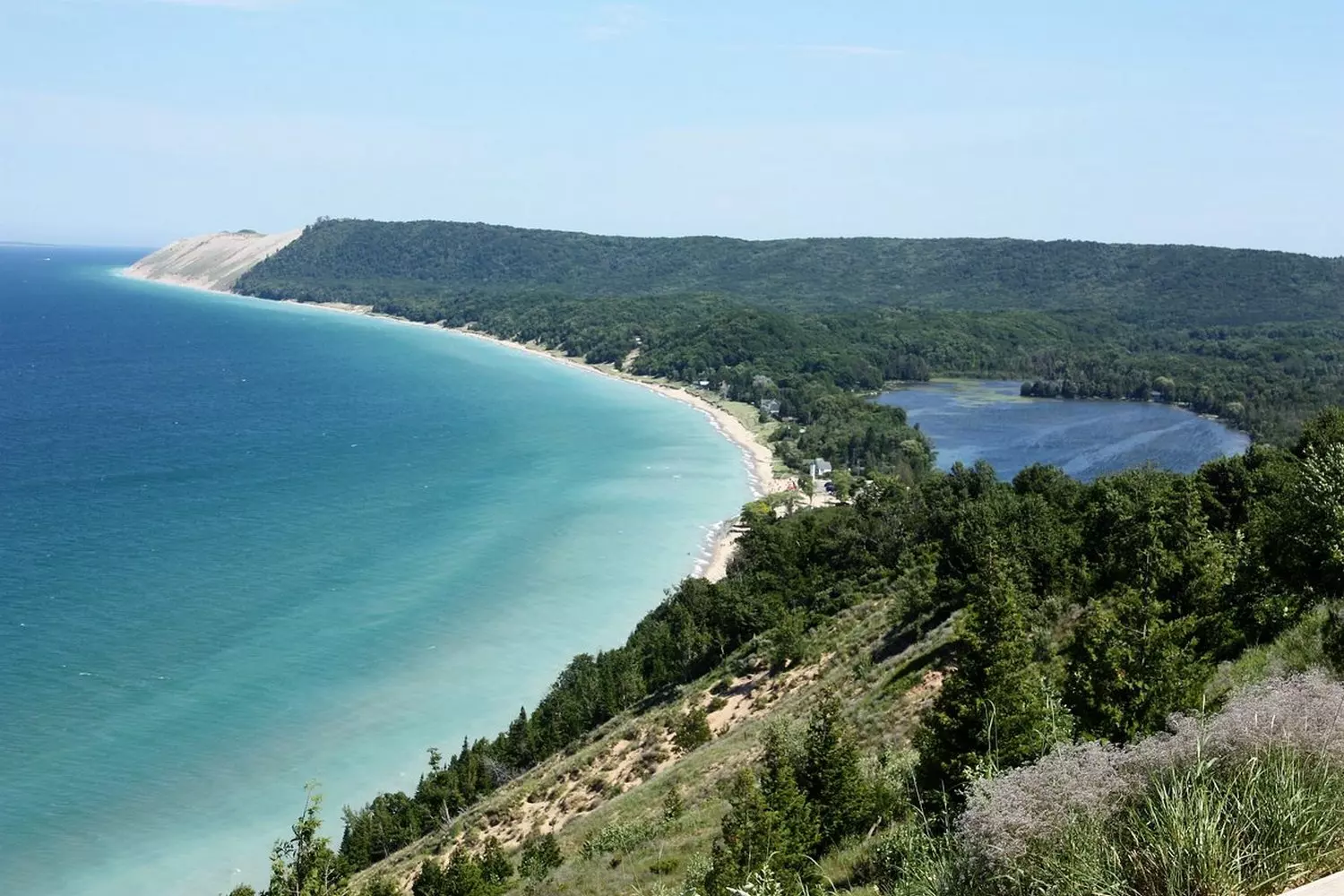
Things to Do at the Great Lakes: Adventures for Body and Soul
The Great Lakes are not only vast water expanses but also a treasure trove of activities for every mood and taste. Want to immerse yourself in wild nature? Or prefer urban comfort with a touch of adventure? Here you’ll find everything — from leisurely strolls to thrilling experiences.
- 01. Water Adventures: from boating to kitesurfing
- Kayaking and Canoeing
Explore bays, islands, and hidden beaches accessible only by water. Lake Huron and Lake Superior are famous for scenic routes suitable for both beginners and experts. - Yachting and Sailing
Clubs and schools on Lakes Michigan and Erie offer lessons and yacht rentals. - Fishing
The Great Lakes are a paradise for fans of walleye, pike, bass, and salmon fishing. Fishing here is both a sport and a form of meditation. - Water Skiing and Wakeboarding
For those who can’t imagine relaxation without adrenaline. - Beach Recreation
Indiana and Michigan’s sandy beaches are perfect for families and sunbathers.
- 02. Hiking and Walking: Trails through Wild Nature
- Pictured Rocks National Lakeshore (Lake Superior)
Trekking along colorful cliffs, waterfalls, and forests. - Sleeping Bear Dunes (Michigan)
The legendary climb to the dunes with views of the lake. - Indiana Dunes
Easy trails along sandy dunes and meadows. - Isle Royale
Long hikes on an uninhabited island with camping overnight.
- 03. Cultural and Urban Entertainment
- Chicago
Museums, architecture tours, the famous Navy Pier, and the summer blues festival. - Detroit
Music museums, automotive history, lively markets, and festivals. - Cleveland
The Rock & Roll Hall of Fame, culinary tours, and art scene.
- 04. Festivals and Events by the Water
- Holland Tulip Festival (Michigan)
A spring celebration with millions of tulips and parades. - Summerfest (Milwaukee)
One of the largest music festivals in the USA, held on the shore of Lake Michigan. - Tall Ships Festival
Sailing regattas and historic ships in Great Lakes ports.
- 05. Ecotourism and Wildlife Watching
- Birdwatching
Spring and autumn migrations — the perfect time to observe cranes, eagles, and herons. - Nature Photography
Unique species — from moose and beavers to rare butterflies. - Guided Tours
Learn about Indigenous peoples’ histories, natural mysteries, and legends of the Great Lakes.
- 06. Active Recreation: Cycling, Golf, and Horseback Riding
- Bicycle Trails
Many paths along the lakes and through parks, from easy rides to sport routes. - Lakeside Golf Clubs
For those who want to combine sport and relaxation with lake views. - Horseback Riding
Popular in rural areas, especially around Michigan.
The Great Lakes are not just a place on the map — they are a whole world of discoveries. From the gentle lap of waves to the rhythm of a big city, from starry nights by the campfire to the lights of evening promenades — here, everyone will find something their own.
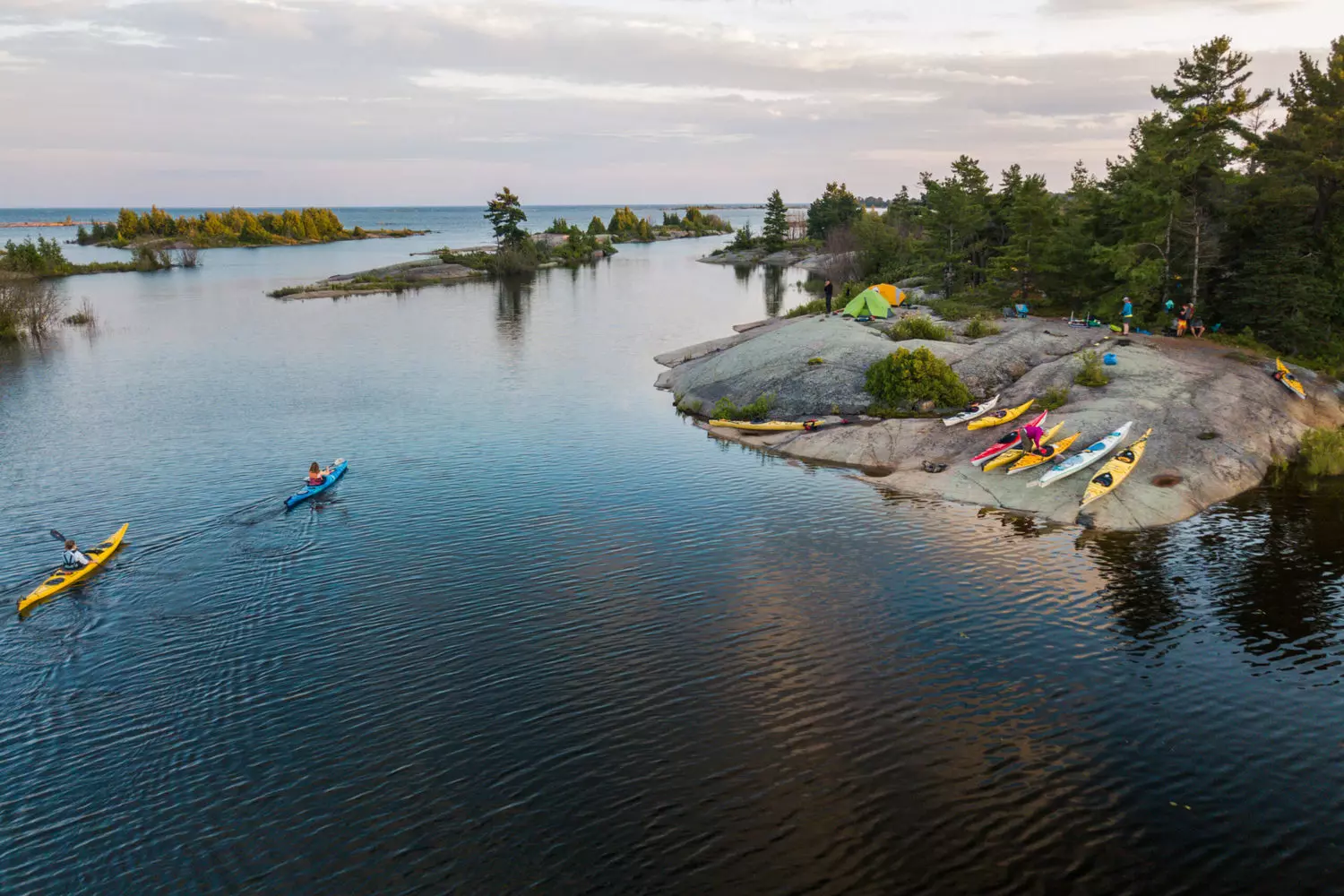
Natural Parks and Campgrounds of the Great Lakes: Where Nature Breathes Freely
Arguably, no other region in the USA blends wild nature and accessible traveler infrastructure as seamlessly as the Great Lakes. From the granite cliffs of Lake Superior to the sandy dunes of Michigan, from Ontario’s maple forests to the protected wetlands of Lake Erie — in every state, on every shore, you’ll find a spot where you can simply disconnect from everything.
Here, you don’t need to drive hundreds of miles inland to be alone with nature. Right by the water, dozens of national and state parks, trails, campgrounds, and rest areas offer some of the most breathtaking sunrises of your life.
Top 5 Natural Spots You Must See
- 01. Isle Royale National Park (Lake Superior, Michigan)
One of the most secluded national parks in the USA — accessible only by boat or seaplane. No cars here, just you, forest, moose, and wolves.
Highlight: 36 campsites along trekking routes across the islands. - 02. Pictured Rocks National Lakeshore (Lake Superior, Michigan)
Unique rock formations, rainbow cliffs, waterfalls, forest trails, and beaches.
Highlight: kayaking along the cliffs — a must for active tourists. - 03. Indiana Dunes National Park (Lake Michigan, Indiana)
Sandy dunes that reach the blue lake surface. The perfect blend of beach relaxation and eco-tourism.
Highlight: over 50 km of trails, including the Birding Trail for birdwatching enthusiasts. - 04. Sleeping Bear Dunes National Lakeshore (Lake Michigan, Michigan)
Sandy hills up to 140 meters high that drop right into the lake.
Highlight: the famous Dune Climb — a test for your legs and a wonder for your eyes. - 05. Presque Isle State Park (Lake Erie, Pennsylvania)
A peninsula with 11 beaches, wild trails, and lighthouses. Perfect for family camping.
Highlight: bike trails along the bay and nature observation platforms.
Camping at the Great Lakes: What You Need to Know
Thanks to the well-developed protected area system, camping here is not extreme, but comfortable with a view of wild beauty. There are primitive sites as well as equipped campgrounds with showers, electricity, and even Wi-Fi. Here’s what to keep in mind:
- Accommodation: tents, trailers, RVs (homes on wheels), wooden cabins.
- Booking: most sites can (and should!) be reserved in advance.
- Amenities: toilets, fire pits, drinking water, tourist info centers.
- Season: campgrounds operate from May to October, with peak season in July-August.
- Cost: from $10 to $40 per night, depending on the state and level of comfort.
Safety and Ecology
- Never leave food unattended — squirrels and raccoons are clever and experienced.
- Always follow the Leave No Trace principle.
- Don’t swim alone on wild beaches — even a lake can be unpredictable.
- Respect the silence — many come camping for the sounds of nature, not loudspeakers.
A tent by the water’s edge, hot coffee in the morning breeze, silence broken only by birdsong... The Great Lakes let you feel true wilderness — without sacrificing comfort. It’s the perfect way to escape it all while staying safe, surrounded by people and beauty.
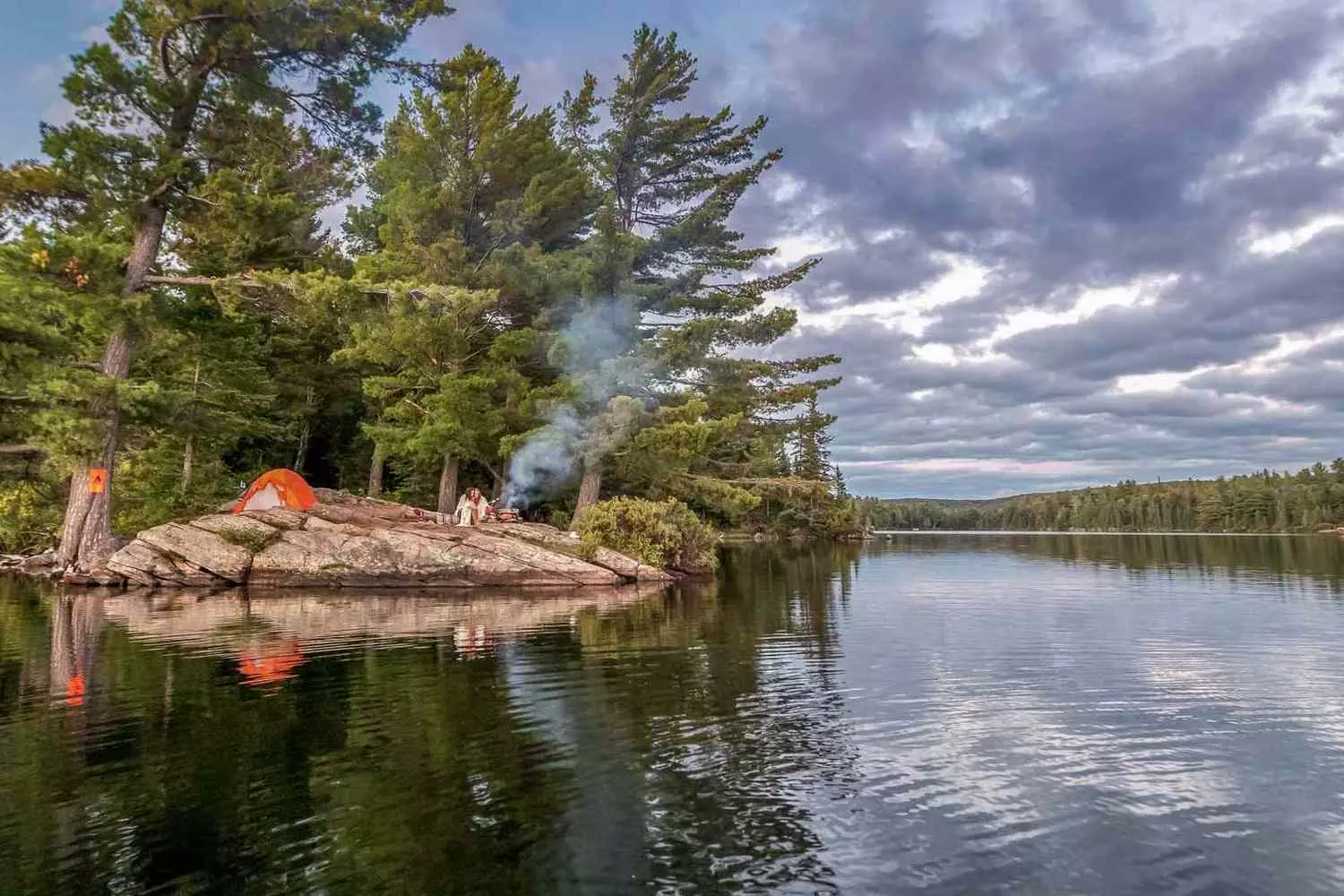
The Great Lakes: Why This Journey Changes Your Perspective on America
When it comes to tourism in the USA, most people immediately think of vibrant metropolises like New York City, the sunny beaches of Florida, or the cinematic California. But not everyone knows that the true spirit of America lies where water and land meet in majestic harmony — the Great Lakes region. This is not just geography; it is a concentration of history, culture, and natural wealth that can open up a whole new America to you.
- 01. History Written Into Every Shore
The Great Lakes are the cradle of cultures and eras. Indigenous peoples have lived here for centuries, preserving sacred knowledge about the water and the land. These lakes were the gateways for European explorers stepping onto this continent for the first time. From wooden canoes of Native Americans to the steamboats of the industrial age — every shore carries a story of struggle, discovery, and change.
- Sites of ancient settlements and trade routes.
- Historic forts and lighthouses, witnesses to pivotal events.
- Industrial cities born on the water — symbols of 20th-century economic power.
Traveling here means not only enjoying beautiful views but also touching the living past that shapes the present.
- 02. Unforgettable Landscapes
The Great Lakes offer a palette of diverse landscapes, from rugged cliffs and wild forests to gentle sandy dunes and green meadows. These scenes shift like a kaleidoscope:
- The cliffs and bluffs of Lake Superior that change color with every hour.
- The dancing dunes of Sleeping Bear Dunes, where the wind paints patterns in the sand.
- Picturesque islands of Huron with their secluded beaches.
- Majestic rivers and canals weaving between the lakes, creating a unique water network.
Each visit tells a new story because nature here is ever-changing, amazing with its freshness and strength.
- 03. Cities with Soul and Character
Immersing yourself in the Great Lakes means exploring their cities — vibrant living organisms where past and present meet.
- Chicago
An architectural marvel famous worldwide, where skyscrapers reflect in Lake Michigan’s waters and blues and jazz music fill every corner. - Detroit
The birthplace of the American automotive industry and soul music, a city experiencing revival and inspiring new achievements. - Cleveland
A cultural hub with the legendary Rock and Roll Hall of Fame and a spirit of creative rebirth. - Milwaukee
A city with European charm and strong brewing traditions, warmly welcoming visitors.
Each of these places has its own rhythm, story, and hospitality — the perfect complement to natural beauty.
- 04. Summer Fun by the Water
Beaches, water, sunshine, and fresh air — that’s summer at the Great Lakes. It’s the perfect place for those who love:
- Fishing at dawn, when the lake is still covered in a gentle mist.
- Kayaking and canoeing in quiet bays.
- Sailing and yachting for wind and wave lovers.
- Barbecues on the shore with friends and family.
- Biking and hiking along promenades and protected areas.
Here, everyone finds their perfect blend of active fun and relaxation.
- 05. National Parks and Nature Reserves — Gifts of Nature
The national parks and reserves surrounding the Great Lakes are places of power, where humans become part of nature rather than its masters.
- Protected forests where rare animals and birds can be seen.
- Unique ecosystems supporting biodiversity.
- Trails for trekking, picnics, and wildlife photography.
- Sites rich in history from Indigenous peoples and European settlers.
These areas are true gems accessible to every traveler.
The Great Lakes are more than just a place on the map. They tell stories of roots, inspire new achievements, and offer moments of true happiness. Here, the power of nature meets the creative energy of cities, history meets modernity, rest meets adventure.
If you want to discover the real America — start with the Great Lakes. Where the water meets the sky, your new journey begins.
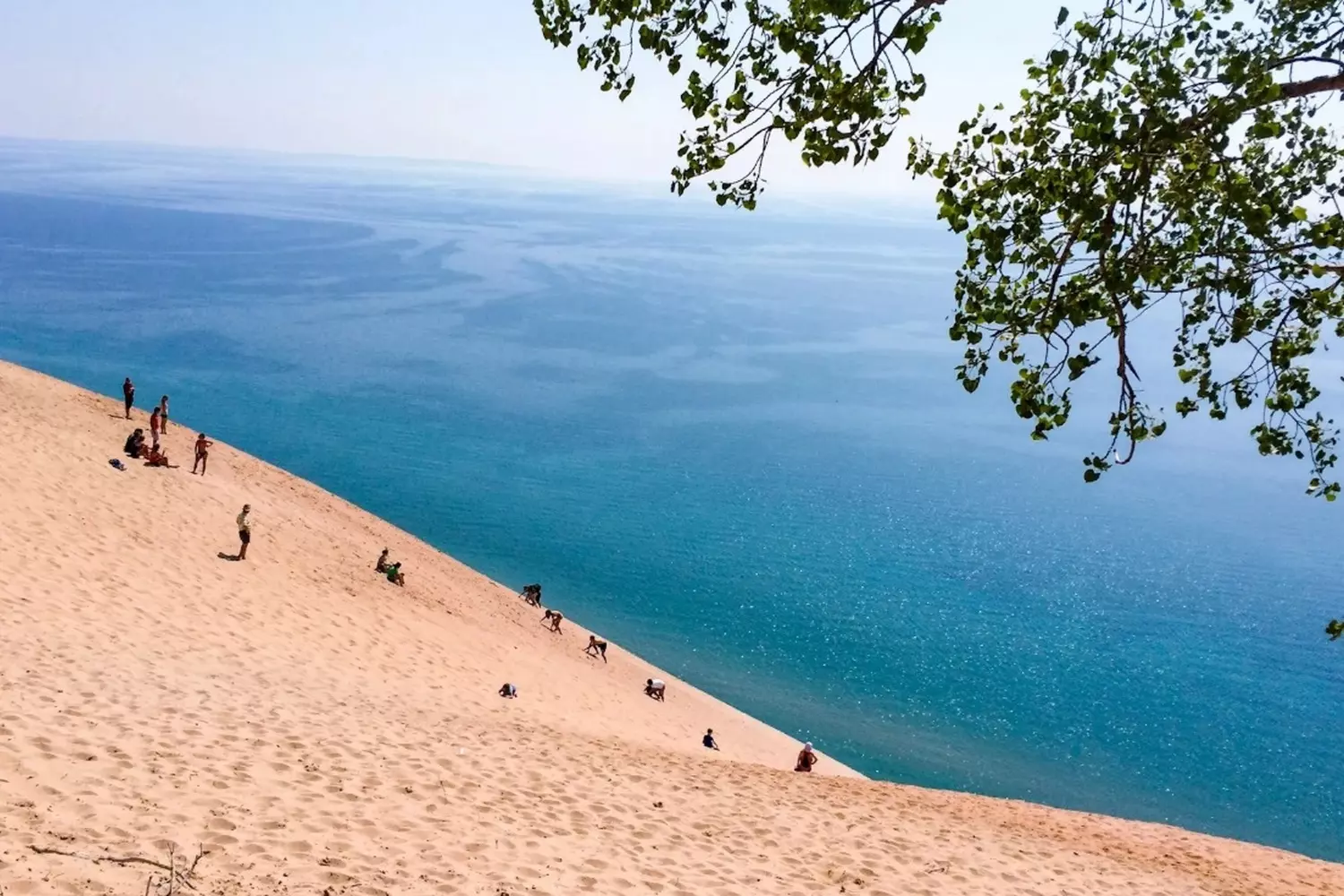
When to Visit the Great Lakes and How to Make Your Trip Perfect
Choosing the right time to visit is key to making your trip to the Great Lakes unforgettable. The climate here changes with the seasons, and each time of year reveals new colors, sensations, and opportunities to travelers. Proper planning and preparation will help you not only enjoy the beauty but also make your trip comfortable and safe.
The Best Time to Travel
- Late Spring (late May — early June)
During this time, nature awakens from its winter slumber: forests turn green, the first flowers bloom, and the air fills with freshness. The weather is still mild, and there are fewer tourists, so you can enjoy peaceful walks and observe the awakening life around you. - Summer (June — August)
Summer is the peak tourist season. Warm weather ideal for swimming and water activities. Beaches come alive, festivals and cultural events take place. However, be prepared for crowds, especially in popular cities and national parks. - Early Autumn (September — early October)
This period is rightly considered one of the most beautiful. The famous “Indian Summer” arrives — clear warm days with a slight chill in the mornings. Forests turn golden, red, and orange, creating incredible landscapes perfect for photos and quiet walks. Autumn’s calm and crisp air make this season especially peaceful. - What to Expect in Winter?
Winter at the Great Lakes can be harsh, with cold winds, frosts, and sometimes blizzards. Many tourist sites close, and walking can become difficult. But for lovers of winter sports and solitude, it’s a time of special beauty — frozen waters and snow-covered forests create magical views.
How to Prepare Properly for Your Trip?
To make your trip as comfortable as possible, consider a few important tips:
- Comfortable Shoes and Clothing
You’ll be walking a lot — through cities, parks, and along the lakeshores. Lightweight sneakers or trekking boots with good arch support will help avoid fatigue. Light jackets or windbreakers come in handy for cool evenings. - Swimwear and Accessories
There are plenty of beaches and swimming spots around the Great Lakes. Bring a swimsuit, towel, sunscreen, and a hat — summers here can be bright and sunny. - Documents
If you plan to cross the Canadian border (for example, to visit Toronto or the Ontario islands), be sure to arrange your visa and valid passport. Don’t forget to get travel medical insurance to avoid unpleasant surprises. - Electronics
Charge your camera or smartphone — the views here are truly breathtaking. It’s recommended to bring a power bank so you don’t miss a single magical sunset or sunrise. - First Aid Kit and Personal Hygiene Items
Despite well-developed infrastructure, it’s better to have basic cold medicines, insect repellents, and any personal medications at hand.
Helpful Tips for Travelers
- Keep an eye on the weather — it can change quickly around the Great Lakes, especially during shoulder seasons.
- Use multi-layered sunscreen — the reflection from the water intensifies UV rays.
- If you plan hiking, study routes in advance and take a map or download offline apps.
- Get acquainted with the local culture and customs — it will make your journey richer and more meaningful.
- Always follow safety rules on the water and during outdoor activities.
The Great Lakes are a place where every season reveals something new, and your trip can be unique at any time of the year. But to truly feel the magic of this land and not miss important details, thorough preparation is essential.
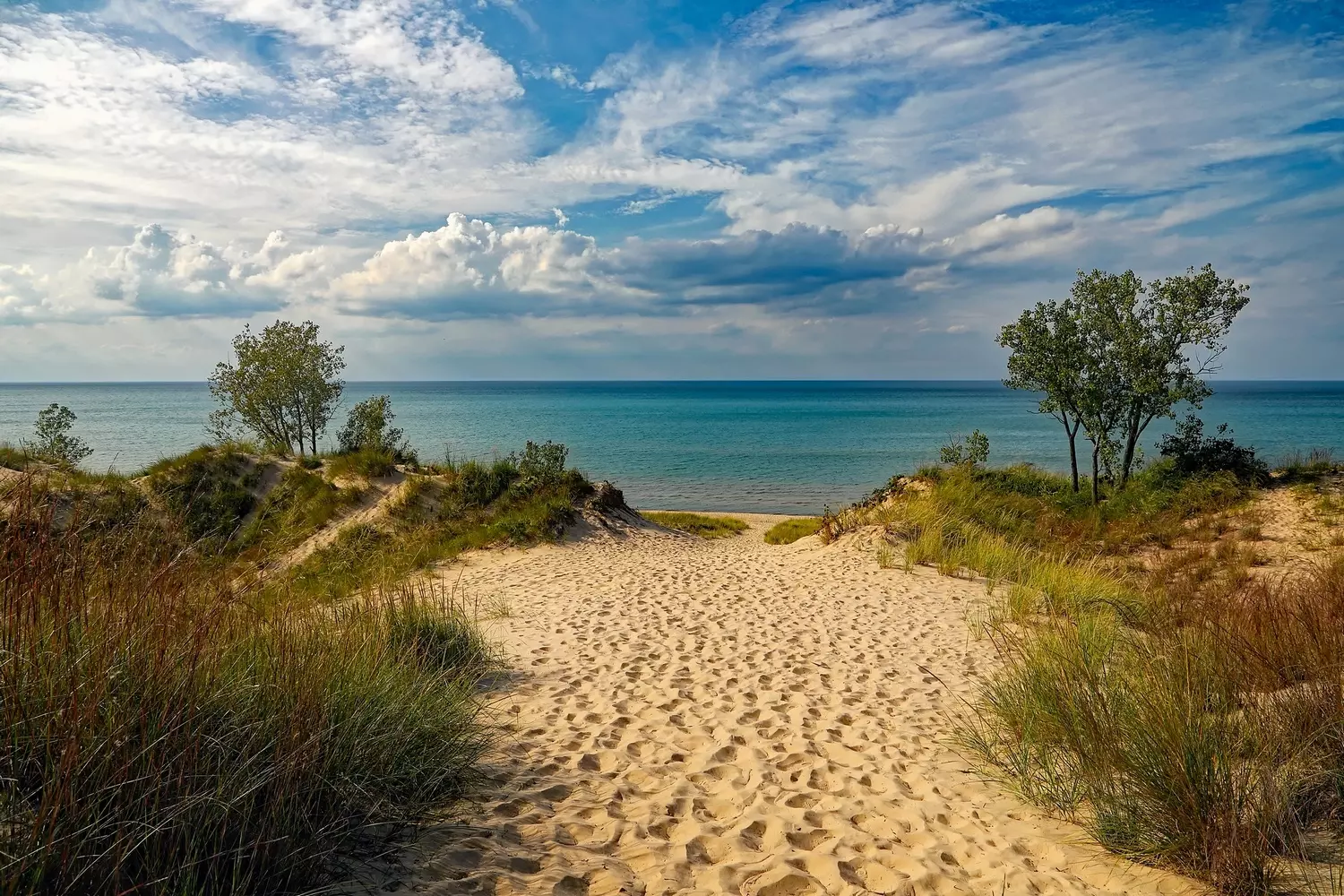
The Great Lakes in Culture and Art: Inspiration from Nature and Cities
The Great Lakes are not only a natural wonder and an economic giant, but also an inexhaustible source of inspiration for artists, writers, musicians, and filmmakers. These waters and shores have become part of the American cultural fabric, reflecting the spirit of the times, history, and the people living nearby.
- 01. In Painting and Photography: Plein Air and Natural Motifs
Since the 18th century, masters of the brush have painted the grandeur of the Great Lakes, capturing the power of the water, the play of light, and the fleeting shades of nature.
- Artists from the Hudson River School and other landscape painters were inspired by the vast water expanses and shores.
- Contemporary photographers create stunning works, capturing reflections of sunsets and the atmosphere of deserted beaches.
- Local galleries and museums regularly hold exhibitions dedicated to the nature and cities of the Great Lakes.
- 02. Music and Film: The Sound and Image of the Water Element
- The Great Lakes inspired genres such as blues, jazz, and rock ’n’ roll, which developed in the cities of Chicago, Detroit, and Cleveland.
- Legends and songs often feature motifs of water, ships, ferries, and lake storms.
- Filmmakers have shot here both dramatic films and romantic stories — water and shores become a special character of the movie.
- 03. Festivals and Traditions: The Cultural Heritage of the Region
- Numerous music and art festivals take place on the shores of the Great Lakes, attracting hundreds of thousands of visitors.
- Traditional Indigenous celebrations and harvest festivals naturally blend with modern events.
- Cultural centers tell the past and present of the region through art and crafts.
Interesting fact: Lake Michigan has been the setting for the creation of more than 50 music albums and dozens of films, and its waterfront is a favorite place for filming and live music performances.
The Great Lakes in Literature: Water That Tells Stories
The Great Lakes have long been more than just a geographic landmark; they are a true source of inspiration for writers and poets. In literature, they often appear as living, breathing characters, reflecting a wide range of emotions — from boundless freedom to deep inner struggle. The lakes become symbols of change, the power of nature, and human experience.
- 01. Margaret Atwood and the Canadian Spirit of the Great Lakes
The famous Canadian writer Margaret Atwood often describes the northern shores of the Great Lakes, especially Ontario and Huron, in her works. In her novels and stories, water is not just a background — it permeates every page, creating a special mood.
In the book The Robber Bride and other works, Atwood masterfully conveys the atmosphere of dense forests, the coolness of the water, and the mystery of lakeside towns. For her, the lakes are spaces where past and present collide, where secrets are kept beneath the water’s surface and in the rustling leaves. - 02. Nelson Alldred Purcell — Poet of Northern Beauty
The American poet and prose writer Nelson Alldred Purcell dedicated several poignant poems and stories to the Great Lakes. He celebrated not only the grandeur of the water but also the fragility of nature and the ability to hear its whisper.
In his poetry, the lakes often become metaphors for life’s trials and the beauty worth protecting. Purcell frequently wrote about the depth of Lake Superior, comparing it to the mysteries of the human soul. - 03. Classics and Legends of the Great Lakes in American Prose
Many classic American works use the Great Lakes as an important plot element or symbolic image:
- Norman Maclean’s novels (“A River Runs Through It,” “Summer”) describe small lakeside settlements where life flows by its own rules, and the water becomes a witness to destinies and secrets.
- Mark Twain’s books, though better known for his works about the Mississippi, also include mentions of northern lakes symbolizing journeys and self-discovery.
- In works of the “American nature” genre, the Great Lakes serve as places where humans meet the wild — a test and simultaneously a solace.
- 04. The Lakes as Meeting Places of Heroes and Tests of Fate
In literature, the Great Lakes often become spaces where characters undergo important changes:
- Meetings on the shore where secrets are revealed.
- Moments of solitude and reflection under the sound of waves.
- Symbolic transitions — from one life to another.
These motifs recur in works by different authors, showing how deeply the Great Lakes are embedded in the cultural code of the region.
Interesting literary fact: Did you know that one of the most famous American poets of the 20th century — Carolina Firn — spent a significant part of her life on the shores of Lake Michigan and drew inspiration from here? Her poems often describe the mood of the water, mist, and sunset reflections.
The Great Lakes are more than just water and land. They are living art that changes every day and invites everyone to become part of a great cultural story.
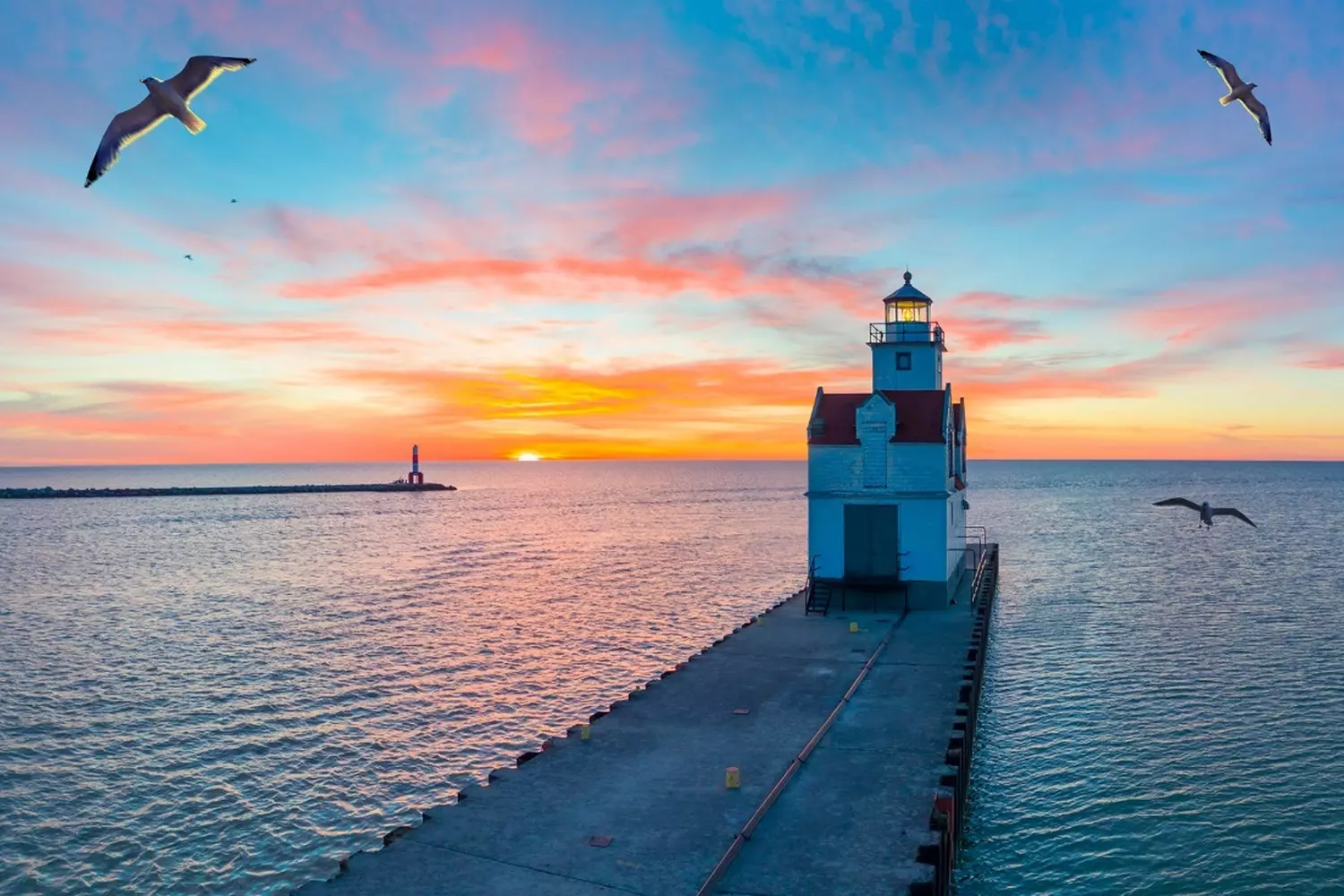
15 incredible facts about the Great Lakes that will amaze you
The Great Lakes are not just huge bodies of water on the border between the USA and Canada. They are true natural giants, hiding amazing secrets: from sunken ships to influencing the weather of an entire continent. Want to know why they are called the "freshwater seas" and what records they break? Then read these fascinating facts!
- 01. A "lost continent" lies at the bottom
Scientists have discovered that beneath the waters of Lake Michigan lies an ancient stone "Stonehenge" with mastodon petroglyphs aged 10,000 years. They also find remains from the Ice Age here! - 02. They create their own "snowbelt"
In winter, evaporation from the lakes turns into "lake-effect snow", causing cities like Buffalo and Rochester to receive up to 2.5 meters of snow per season. This phenomenon is called the "Great Lakes snow effect." - 03. Lake Huron hides an underwater "waterfall"
At the bottom of Huron is a giant underwater cave with a steep drop — if the water were not clear, it would look like the tallest waterfall in the world (100 meters)! - 04. There is an "underwater Bermuda Triangle" here
Lake Michigan is famous for an anomalous zone where ships and airplanes disappear. The most mysterious case is the disappearance of Northwest Airlines Flight 2501 in 1950. The wreckage was never found, and local fishermen tell stories of strange lights under the water. - 05. On Lake Erie you can see "ice volcanoes"
In winter, during strong winds and frost, icy cones up to 3 meters high form on Erie, from which water shoots out like geysers. This rare phenomenon is called "cryovolcanism" — and it looks like a landscape from another planet! - 06. A "lost city" lives in Lake Huron
At the bottom of Huron lie the ruins of a flooded 19th-century logging town — it is very well preserved in the cold water. Also, ancient stone labyrinths built by indigenous peoples 9,000 years ago have been found here. - 07. The lakes are so huge they can be seen from space
ISS astronauts regularly photograph the Great Lakes — they are the only system of freshwater bodies clearly visible from orbit. Moreover, their vast water mass distorts Earth's gravitational field, which NASA satellites detect. - 08. Lake Superior never fully freezes
Despite harsh winters, Lake Superior never freezes 100% due to its depth (up to 406 m) and constant underwater currents. This creates a unique microclimate where rare fish species live. - 09. The "lake monster" lives in Erie
Locals have been telling stories about "Bessie" — a 10-meter serpent-like creature — for 200 years. In 1990, it was even caught on video, and scientists suggest it could be a relict population of ancient fish. - 10. The lakes create their own "tornadoes"
In autumn, "steam tornadoes" form over the warm water — vertical vortices up to 1.5 km high. This rare phenomenon can only be seen here and in Japan. - 11. Lake Huron hosts an underwater NASA laboratory
At a depth of 20 meters is the "Aquarius" base, where astronauts train for future Mars missions. Conditions in these waters closely mimic those in space! - 12. The Great Lakes "sing"
Researchers have recorded mysterious low-frequency sounds emanating from the bottom of Lake Michigan. These "songs" last for hours, and their origin remains unexplained. Some believe they are sounds of shifting glacial deposits, others think something more... mysterious. - 13. Lake Huron has an underwater "perpetual motion machine"
A unique phenomenon — constant underwater currents that have not stopped for thousands of years. They are so strong they can hold heavy objects afloat without movement. - 14. Lake Ontario hides a "sunken desert"
Sand dunes identical to those found in the Sahara have been discovered at the bottom. Scientists believe that 12,000 years ago, there really was a desert here. - 15. "Ice flowers" live in Lake Superior
In especially cold winters, amazing crystalline structures form on the ice surface, resembling fragile glass flowers. Each such formation is unique.
Bonus:
- The Great Lakes are the only place where the "lake sturgeon" lives — a fish that existed even during the age of dinosaurs.
- Lake Superior experiences the "three sisters" — three giant consecutive waves that can sink even large ships.
- Every spring, Michigan "blooms" due to unique bioluminescent algae.
- A sunken forest aged 8,000 years was found at the bottom of Huron.
- A meteorite crater was discovered at the bottom of Lake Superior. Scientists found a 35-kilometer-wide crater formed about 1.8 billion years ago. It is the site of one of the largest meteorite impacts in Earth's history and still affects the lake’s geology.
- The "floating forest" of Lake Ontario — a whole island of trees drifting in the lake for over 100 years.
- "Ice hairs" of Lake Superior — a rare natural phenomenon where thin ice threads form on the shore, resembling mermaid hair.
- The "breathing lake" — every few years, Huron releases huge methane bubbles, creating the effect of "boiling water."
- "Reverse currents" — in some bays of Ontario, water flows... uphill!
- The "glass beach" of Michigan — an entire shore covered with perfectly polished stones resembling jewels.
The deeper you study the Great Lakes, the more they resemble the plot of a science fiction novel. There is everything here: disappearances, ancient artifacts, ice eruptions, and even "ghosts." The Great Lakes are not just a geographical feature, but an endless book with new amazing pages appearing every day. Maybe tomorrow we'll learn that they hide underwater cities or portals to other dimensions. One thing is certain: these waters will never stop surprising us!
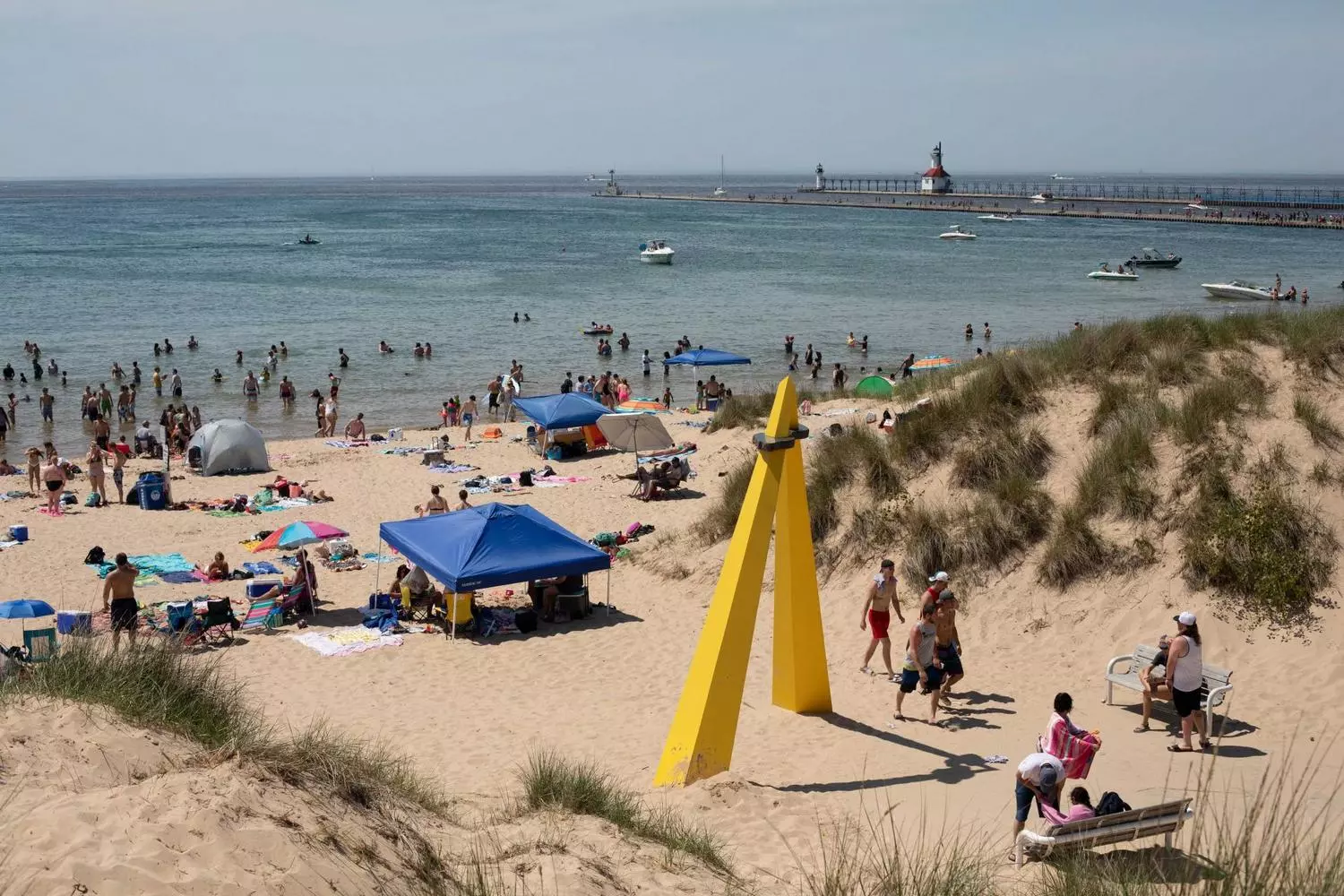
America from the Other Shore with American Butler
A journey to the Great Lakes is a way to see a different America. Without the hustle of metropolises, without the pomp of tourist capitals. Here, the aesthetic is different — lake, water, nature. Here, what matters are not likes, but feelings. Not checkmarks on a list, but an inner dialogue.
If you’re ready for a trip that will truly leave a mark — we at American Butler will help you organize it. With attention to detail, care, and passion for what we do.
Stop postponing the present. Let’s go.














